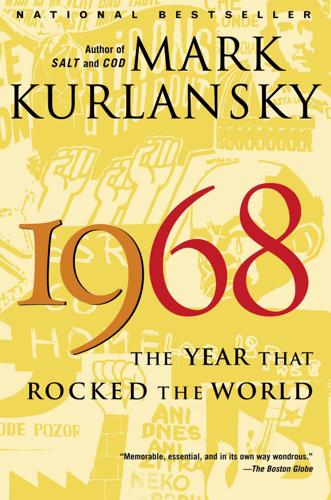
1968: The Year That Rocked the World
by
Mark Kurlansky
Published 30 Dec 2003
But if Hayden gave 1968 its statement of principles and Savio its spirit—its style was best expressed by an over-thirty man from Worcester, Massachusetts. In his entire lifetime, perhaps in all of history, there was no year that was better suited for Abbie Hoffman than 1968. It must have seemed extraordinary to him that year that the world had come around to his way of doing things. He used to say that he had been born with the decade, in 1960, and that was probably how it felt to him. Abbie Hoffman was one of the first Americans to fully appreciate the possibilities and the importance of living in what was becoming a media age. He was the New Left’s clown, not because he was clownish, but because in a very calculated way he understood that the New Left was in need of a clown, that a clown could publicize their issues, that a clown was not ignored.
…
Tom Hayden wrote that he considered Camus to be one of the great influences in his decision to leave journalism and become a student activist. Abbie Hoffman used Camus to explain in part the Yippie! movement, referring to Camus’s words in Notebooks: “The revolution as myth is the definitive revolution.” By 1968 there was another intellectual it seemed everybody wanted to quote: Marxist-Hegelian revisionist revolutionary Herbert Marcuse. His most appealing idea was what he called “the great refusal,” the time to say “No, this is not acceptable”—another idea that was expressed in Savio’s “odious machine” speech. Marcuse, a naturalized American citizen who had fled the Nazis, was on the faculty of Brandeis when Abbie Hoffman had been a student there, and Hoffman was enormously influenced by him, especially by his book Eros and Civilization, which talked about guilt-free physical pleasure and warned about “false fathers, teachers, and heroes.”
…
Folksinging, barbecues, swimming, lovemaking August 27 (Dawn) Poetry, mantras, religious ceremony August 28 (AM) Yippie Olympics, Miss Yippie Contest, Catch the Candidate, Pin the Tail on the Candidate, Pin the Rubber on the Pope and other normal, healthy games Many of the items were classic Abbie Hoffman put-ons. Others were not. An actual festival had been planned, bringing in music stars such as Arlo Guthrie and Judy Collins. The Yippies had been working on it for months, but the music stars could not be brought in without permits, which the city had been declining to give for months. A meeting between Abbie Hoffman and Deputy Mayor David Stahl was predictably disastrous. Hoffman lit a joint and Stahl asked him not to smoke pot in his office. “I don’t smoke pot,” Hoffman answered, straight-faced.
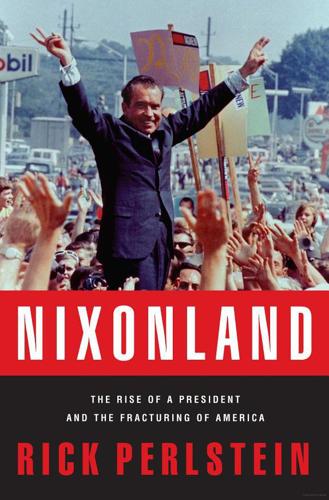
Nixonland: The Rise of a President and the Fracturing of America
by
Rick Perlstein
Published 1 Jan 2008
TV crew members outnumbered the snake dancers: “Wa’shoi! Wa’shoi!” they chanted every time a producer asked. Downtown in Civic Center Plaza, Abbie Hoffman and Jerry Rubin and folksinger Phil Ochs literally unleashed the Youth International Party’s presidential candidate—Pigasus, a greased and ornery insult on four legs with a curly tail. Officers chased the animal around the plaza for a half hour, cameramen scurrying, cops greedily fingering their service revolvers, Abbie Hoffman crying, “Our candidate! Don’t shoot our candidate!” Thursday night at 11 p.m. in Lincoln Park, the same thing happened that had been happening at 11 p.m. all week: obediently, the drum circles broke up, the political bull sessions ceased, guitars were returned to cases, litter bagged and packed out.
…
Foran: “Were any of the defendants present?” The Witness: “Yes. Weiner and Froines were at this meeting. So was Abbie Hoffman.” Mr. Foran: “Do you see Mr. Hoffman here in the courtroom?” The Witness: “Yes, I do.” Mr. Foran: “Would you step down and point him out, please.” The Witness: “Mr. Hoffman is sitting with the leather vest on, the shirt—he just shot me with his finger. His hair is very unkempt.” The hippies’ hippie-ness was on trial; style was a battleground. Abbie Hoffman, asked why they lured innocent youth to Chicago with sex and rock bands, replied, “Rock musicians are the real leaders of the revolution.”
…
Harris was out with a new poll: “Post-Summit Advance Also Made by Kennedy,” WP, June 26, 1972. CHAPTER THIRTY-THREE: IN WHICH PLAYBOY BUNNIES, AND BARBARELLA, AND TANYA INSPIRE THEORETICAL CONSIDERATIONS UPON THE NATURE OF DEMOCRACY Robert Redford: J. Hoberman, The Dream Life: Movies, Media, and the Mythology of the Sixties (New York: New Press, 2003), 353. Abbie Hoffman and Jerry Rubin set up housekeeping: Abbie Hoffman, Jerry Rubin, and Ed Sanders, Vote!: A Record, a Dialogue, a Manifesto—Miami Beach, 1972 and Beyond (New York: Warner Paperbacks, 1972), 28, 42–44. “McGovern Backer No Longer Thinks”: Bob Greene, Running (Chicago: Regnery, 1973), 56. “Fellas, I don’t believe”: Hoffman, Rubin, and Sanders, Vote!

Exploding the Phone: The Untold Story of the Teenagers and Outlaws Who Hacked Ma Bell
by
Phil Lapsley
Published 5 Feb 2013
Mullane, October 27, 1969 <db524>; “History of 168 Fraud,” AT&T memo, February 1970 <db549>; and “Fraudulent Credit Card Usage, Case #C7-13-19,” AT&T memo, undated <db548>. 195 It is evident: “Credit Card Study.” 195 It is necessary: “Bell System Credit Card Plan–1971 Cards,” AT&T internal memo, August 7, 1970 <db405>. 196 “With all the electronic means”: Bill Acker, author interview, 2010. 197 The first underground and college newspapers: See, e.g., “Free Phone Calls,” Dallas Notes, January 24–February 6, 1971 <db536>; the same article was published in a number of college or underground newspapers within a week. 197 “public disservice announcement”: Radio TV Reports, Inc., transcript of Abbie Hoffman appearance on the TV program Free Time with Julius Lester, April 7, 1971, 10:30 p.m. in New York City on WNET-TV <db672>. 197 rebuttal from Hoffman: Abbie Hoffman, “Dear Russell (Baker That Is),” YIPL, no. 2, July 1971, p. 3. 198 “two thousand and three thousand subscribers”: Bell, author interview, 2006. 198-199 assumed names and employee home addresses: Ken Hopper, author interview, 2006; Wayne Perrin, author interview, 2008. 199 obtained a copy of this memo: Memorandum from J.
…
The connection between the Yippies and the telephone was this: YIPL was devoted to teaching Yippies and hippies and rebellious youth how to use the telephone as a tool of civil disobedience, specifically, how to make free phone calls to fuck the Bell System and, with it, the United States government. YIPL was the brainchild of Alan Fierstein and Yippie founder Abbie Hoffman. Fierstein was an engineering major at Cornell University during the late 1960s who had long been interested in the telephone system. Based on his own investigations and through conversations with his fellow engineering students he had learned several ways to make free telephone calls. But Fierstein differed from many phone phreaks in one important way: he was strongly political.
…
But Fierstein differed from many phone phreaks in one important way: he was strongly political. As a young liberal student at the end of a tumultuous decade he recalls feeling that his mission was to “end the Vietnam War and oppose Nixon in any possible way.” In his travels through the antiwar demonstrations at Cornell, Fierstein made the acquaintance of the famous and flamboyant Abbie Hoffman, who was then in the process of writing Steal This Book, the Yippie manifesto that taught its readers how to get free food, free postage, free weapons, even a free buffalo from the U.S. Department of the Interior. Fierstein told Hoffman of the ways he knew to make free phone calls and Hoffman was quick to incorporate them into his stealable book.
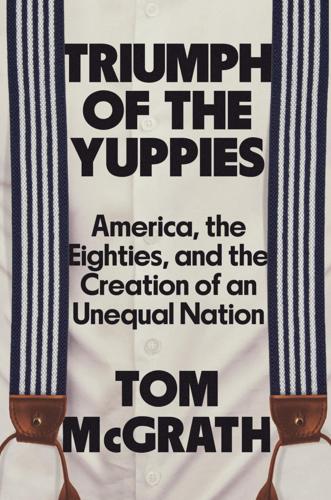
Triumph of the Yuppies: America, the Eighties, and the Creation of an Unequal Nation
by
Tom McGrath
Published 3 Jun 2024
“Had the Democratic Party nominated Gary Hart… you would have seen a very close election,” said Jerry, an enthusiastic Hart supporter. Then he made a prediction: “In 1988, a Yuppie-oriented, a Baby Boom–oriented candidate, will be elected president of the United States. And this candidate will have a social base made up of those same people that were active and were part of the ’60s constituency that Abbie Hoffman and I represented. “I respect Abbie Hoffman as an activist, but it saddens me that he has isolated himself from the very generation that he was active with in the 1960s.” That generation, Jerry said, now wanted to be successful, and there was nothing wrong with that. “You can be wealthy and still care about changing the world.
…
Even more incongruous, though, was Rubin’s own history and modus operandi. He’d made a name for himself during the ’60s not only with his politics—he called for a “youth revolution” and urged America’s young people to “kill your parents!”—but also for drawing attention to himself and his causes with high-profile stunts. Once in the mid-’60s, Rubin and his friend Abbie Hoffman—with whom he’d go on to cofound the radical Youth International Party, a.k.a. the Yippies—stormed the New York Stock Exchange alongside a small group of fellow activists, throwing hundreds of dollar bills from the balcony onto the trading floor and watching with delight as the traders literally dove all over one another to grab the cash.
…
But now, three years later, talk of changing the world seemed to have disappeared. His goal was success—and he seemed more prepared than ever to do what it took to get it. Rubin had lost touch with many of the people he’d protested alongside in the ’60s, but one person he’d stayed close to—though it wasn’t always easy—was Abbie Hoffman. In 1974, Abbie had gone underground following his arrest on cocaine charges, getting plastic surgery and taking on a new identity, Barry Freed, as he evaded law enforcement. Still, he and Jerry had found ways to keep in touch. Mimi Rubin would later remember that when she and Jerry moved in together in 1977, one of the first things they did was fly to Florida to spend time with Abbie and his girlfriend, Josie Lawrenson; the couples would see each other often during that period.
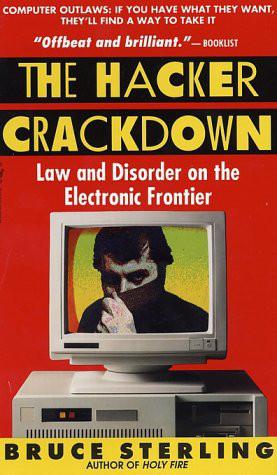
The Hacker Crackdown
by
Bruce Sterling
Published 15 Mar 1992
After surrendering himself to authorities in 1980, Hoffman spent a year in prison on a cocaine conviction. Hoffman's worldview grew much darker as the glory days of the 1960s faded. In 1989, he purportedly committed suicide, under odd and, to some, rather suspicious circumstances. Abbie Hoffman is said to have caused the Federal Bureau of Investigation to amass the single largest investigation file ever opened on an individual American citizen. (If this is true, it is still questionable whether the FBI regarded Abbie Hoffman a serious public threat—quite possibly, his file was enormous simply because Hoffman left colorful legendry wherever he went). He was a gifted publicist, who regarded electronic media as both playground and weapon.
…
Their basic tenets were flagrant sexual promiscuity, open and copious drug use, the political overthrow of any powermonger over thirty years of age, and an immediate end to the war in Vietnam, by any means necessary, including the psychic levitation of the Pentagon. The two most visible Yippies were Abbie Hoffman and Jerry Rubin. Rubin eventually became a Wall Street broker. Hoffman, ardently sought by federal authorities, went into hiding for seven years, in Mexico, France, and the United States. While on the lam, Hoffman continued to write and publish, with help from sympathizers in the American anarcho-leftist underground.
…
In the early 1970s, it required fairly limited expertise and ingenuity to cheat payphones, to divert "free" electricity and gas service, or to rob vending machines and parking meters for handy pocket change. It also required a conspiracy to spread this knowledge, and the gall and nerve actually to commit petty theft, but the Yippies had these qualifications in plenty. In June 1971, Abbie Hoffman and a telephone enthusiast sarcastically known as "Al Bell" began publishing a newsletter called Youth International Party Line. This newsletter was dedicated to collating and spreading Yippie rip-off techniques, especially of phones, to the joy of the freewheeling underground and the insensate rage of all straight people.
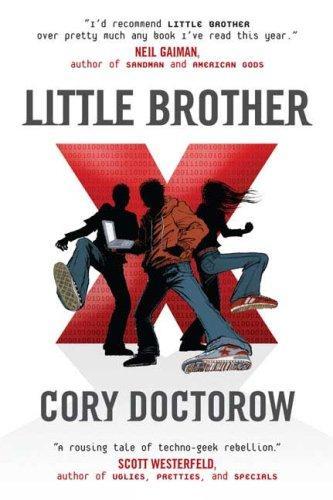
Little Brother
by
Cory Doctorow
Published 29 Apr 2008
The Pirate Party mentioned in Little Brother is real and thriving in Sweden (www.piratpartiet.se), Denmark, the USA and France at the time of this writing (July, 2006). They're a little out-there, but a movement takes all kinds. Speaking of out-there, Abbie Hoffman and the Yippies did indeed try to levitate the Pentagon, throw money into the stock exchange, and work with a group called the Up Against the Wall Motherf_____ers. Abbie Hoffman's classic book on ripping off the system, "Steal This Book," is back in print (Four Walls Eight Windows, 2002) and it's also online as a collaborative wiki for people who want to try to update it (stealthiswiki.nine9pages.com).
…
More counterculture fun: Jack Kerouac's "On the Road" can be had in practically any used bookstore for a buck or two. Allan Ginsberg's "HOWL" is online in many places, and you can hear him read it if you search for the MP3 at archive.org. For bonus points, track down the album "Tenderness Junction" by the Fugs, which includes the audio of Allan Ginsberg and Abbie Hoffman's levitation ceremony at the Pentagon. This book couldn't have been written if not for George Orwell's magnificent, world-changing "1984," the best novel ever published on how societies go wrong. I read this book when I was 12 and have read it 30 or 40 times since, and every time, I get something new out of it.
…
For the hackers and cypherpunks: Bunnie Huang, Seth Schoen, Ed Felten, Alex Halderman, Gweeds, Natalie Jeremijenko, Emmanuel Goldstein, Aaron Swartz For the heroes: Mitch Kapor, John Gilmore, John Perry Barlow, Larry Lessig, Shari Steele, Cindy Cohn, Fred von Lohmann, Jamie Boyle, George Orwell, Abbie Hoffman, Joe Trippi, Bruce Schneier, Ross Dowson, Harry Kopyto, Tim O'Reilly For the writers: Bruce Sterling, Kathe Koja, Scott Westerfeld, Justine Larbalestier, Pat York, Annalee Newitz, Dan Gillmor, Daniel Pinkwater, Kevin Pouslen, Wendy Grossman, Jay Lake, Ben Rosenbaum For the friends: Fiona Romeo, Quinn Norton, Danny O'Brien, Jon Gilbert, danah boyd, Zak Hanna, Emily Hurson, Grad Conn, John Henson, Amanda Foubister, Xeni Jardin, Mark Frauenfelder, David Pescovitz, John Battelle, Karl Levesque, Kate Miles, Neil and Tara-Lee Doctorow, Rael Dornfest, Ken Snider For the mentors: Judy Merril, Roz and Gord Doctorow, Harriet Wolff, Jim Kelly, Damon Knight, Scott Edelman Thank you all for giving me the tools to think and write about these ideas. &&&$ Creative Commons Creative Commons Legal Code Attribution-NonCommercial-ShareAlike 3.0 Unported CREATIVE COMMONS CORPORATION IS NOT A LAW FIRM AND DOES NOT PROVIDE LEGAL SERVICES.

The Pentagon: A History
by
Steve Vogel
Published 26 May 2008
Johnson, Army chief of staff, 1964–1968 David McGiffert, under secretary of the Army, 1966–69 Lieutenant Colonel Ernest Graves Jr., son of Ernest Graves and aide to the secretary of the Army, 1967–68 Captain Phil Entrekin, commander of C Troop, 1st Squadron, 6th Cavalry Regiment at the Pentagon, 1967 Abbie Hoffman, marcher at the Pentagon, cofounder of Youth International Party (Yippies) Norman Mailer, marcher at the Pentagon, author of The Armies of the Night Bill Ayers, marcher at the Pentagon, later member of Weather Underground Rita Campbell, custodial foreman for Pentagon’s fourth floor cleaning crew The Post-Vietnam Years Donald Rumsfeld, secretary of defense, 1975–77, 2001–2006 Colin Powell, military assistant to secretary of defense Caspar Weinberger, 1983–86; chairman of the Joint Chiefs, 1989–93; secretary of state, 2001–05 John Hamre, Department of Defense comptroller, 1993–97; deputy secretary of defense, 1997–99 Paul Wolfowitz, deputy secretary of defense, 2001–2005 Pentagon Management David O.
…
All day, minute-by-minute updates had come in from Army intelligence agents who had infiltrated the marchers assembling at the Lincoln Memorial. Operatives reported seeing militant demonstrators carrying everything from water pistols and walkie-talkies to canisters of tear gas and billy clubs. Other agents reported on the whereabouts of Abbie Hoffman and H. Rap Brown, two of the most notorious protest organizers. Overhead, military reconnaissance aircraft circled the demonstrators. Meanwhile, from twenty-three listening posts set up inside the Pentagon, Army agents with earphones on their heads sat hunched over radio equipment, eavesdropping on citizens’ radios.
…
The National Mobilization Committee to End the War in Vietnam—the Mobe, as it was known—had vowed to “shut down the Pentagon” in what it promised would be the greatest antiwar protest in history. The Mobe included a vast array of peace groups and radical organizations with conflicting agendas under its umbrella—“Ghandi and Guerrilla” and most everything in between, as Mobe chairman David Dellinger said. A healthy dose of comic absurdity was thrown in. Abbie Hoffman, cofounder of the radical Youth International Party (Yippies) and a showman in the tradition of P. T. Barnum, announced plans to use the psychic energy of thousands of protesters to levitate the Pentagon three hundred feet in the air, where it would turn orange and vibrate until all evil spirits spilled out.

Whole Earth: The Many Lives of Stewart Brand
by
John Markoff
Published 22 Mar 2022
He took the train across the country, on the way reading Paul Ehrlich’s The Population Bomb. After appearing on the panel, he showed WAR:GOD as the warm-up act for a rock concert featuring the MC5, then at the height of their “Kick out the jams, motherfuckers!” fame. Another panel featured Ralph Metzner, an LSD pioneer, and antiwar yippies Jerry Rubin, Abbie Hoffman, and Paul Krassner. Brand had met Hoffman through John Brockman, and he continued to be attracted to the “psychedelic” side of the Vietnam War protest movement. That was certainly an accurate description of Hoffman, who would become embroiled in the trial of the Chicago 8 that fall, and who took pleasure in being absolutely outrageous.
…
He looked around and couldn’t see who was baiting him. After a while he left the stage, dismissing the audience as he walked out: “We go around once in life and it’s a shame to just waste it and I’m leaving now.” The crowd was confused. People were asking, “What just happened? Who insulted the guru?” Under the table, Abbie Hoffman was cackling. * * * Soon after he returned from the drug conference, Brand, Jennings, and Joe Bonner packed up the Truck Store in his camouflage-painted VW bus full of books and headed to New Mexico. Steve Baer, the environmental designer, and his business partner Barry Hickman had been plotting a gathering of the tribes in New Mexico in the spring of 1969.
…
And Jennings announced that she was filing for divorce and was involved with Keith Britton, a British engineer and explosives expert, whom she planned to marry. A weight was lifted. Although Brand retained a political aversion to the New Left, he made exceptions for people he considered friends, like Abbie Hoffman and Paul Krassner. Krassner had originally moved to the West Coast from New York when Brand had convinced him and Ken Kesey to edit the final Last Supplement to the Whole Earth Catalog. They in turn had persuaded the counterculture cartoonist R. Crumb to illustrate the cover, making it look like a very raunchy Last Supper.
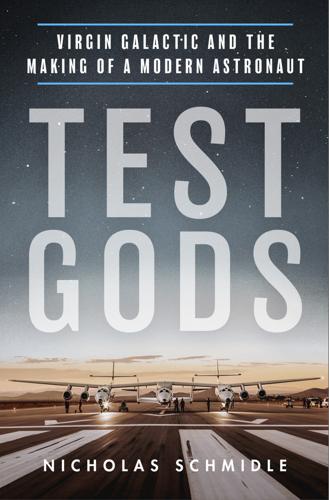
Test Gods: Virgin Galactic and the Making of a Modern Astronaut
by
Nicholas Schmidle
Published 3 May 2021
“There was never any doubt”: Koller, The Eden Peace Witness. One day, he found an article: Joseph A. Walker and Dean Conger, “I Fly the X-15, Half Plane, Half Missile,” National Geographic, September 1962. “West Point schmuck”: Karen Lambert, “An Angry, Profane Abbie Hoffman Urges Youth to Join His Revolution,” Salina Journal, April 10, 1970. threw eggs at the stage: Lambert, “An Angry, Profane Abbie Hoffman Urges Youth to Join His Revolution.” Two years later Mark picked up: Kenneth F. Weaver, “To the Mountains of the Moon,” National Geographic, February 1972. BORN TO FLY: Tom Carlin, “Born to Fly,” K-Stater Magazine, March 1980. 2: FORGER “I just kept reminding myself”: Alex Beam, “Michael Collins, the Lucky, Grumpy Astronaut,” Boston Globe, October 22, 2018.
…
One time she punished Mark by striking him in the head with a frozen chicken. She did not get along with Paul, either: she once punched him in the nose and broke his glasses; he simply turned and walked away. Paul opposed the war in Vietnam and brought Mark and his sisters to peace marches. At age twelve, Mark went to see Abbie Hoffman when Hoffman came to Kansas, blowing his nose with an American flag and asking why the “West Point schmuck who plots the Song My massacre” wasn’t in jail. An outraged spectator sitting a few seats away from Mark threw eggs at the stage, narrowly missing Hoffman. Two years later Mark picked up another issue of National Geographic; it featured a spread of stunning photographs shot by the Apollo 15 astronauts from the barren, boot-printed surface of the moon.
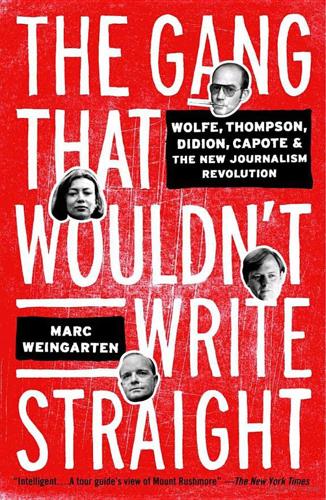
The Gang That Wouldn't Write Straight: Wolfe, Thompson, Didion, Capote, and the New Journalism Revolution
by
Marc Weingarten
Published 12 Dec 2006
Jerry Rubin, a former journalist and aspiring socialist who had participated in the earliest Free Speech Movement marches that had coalesced around the University of California campus in Berkeley, was the shrewdest agent provocateur of the antiwar effort. A founding member of the Youth International Movement along with Brandeis University grad and civil rights veteran Abbie Hoffman, Rubin in early 1965 was organizing two days of demonstrations to take place on the Berkeley campus, a call to action that would land Cal at the forefront of student-driven social activism in America. The idea was to bring the world’s leading intellectuals to Berkeley, including Bertrand Russell and muckraking journalist I.
…
The idea was to provide spiritual uplift and some meaningful reflection, an approach that was antithetical to Rubin’s confrontational finger-pointing. But Rubin had a proven track record for mobilizing large groups and drawing media attention with guerilla theater. Four months earlier, Rubin, Abbie Hoffman, and a handful of others had sneaked their way to the third-floor gallery of the New York Stock Exchange and ranted about the corporate sponsorship of the war. After the speech, they tossed fistfuls of cash down to the floor, sending traders into a frenzied scramble that was supposed to symbolize the “death of money” and the corrosive effects of greed on American capitalism.
…
The march, as David Dellinger and Jerry Rubin had envisioned it, would start with a mass rally at the Lincoln Memorial and then work its way across the Potomac via the Arlington Bridge to the Pentagon. A short rally would be held, with speeches from dignitaries such as Noam Chomsky and Benjamin Spock, followed by the blockade of the building and an “exorcism” of the Pentagon led by Abbie Hoffman. But the crowd that day was bigger than the organizers had anticipated— some news reports estimated that as many as 250,000 had traveled to Washington for the march—which meant that the relatively short distance from the memorial to the Pentagon would take hours and require reserves of patience and fortitude.
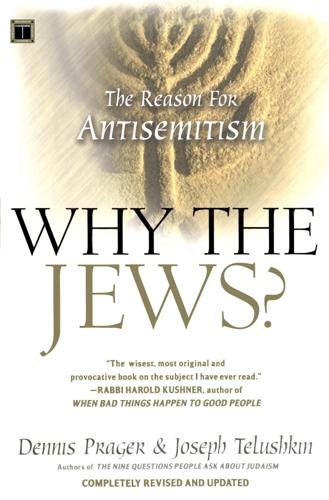
Why the Jews?: The Reason for Antisemitism
by
Dennis Prager
and
Joseph Telushkin
Published 1 Nov 2007
Nevertheless, and unfortunately for other Jews, the behavior of these radical non-Jewish Jews is identified as Jewish. The association of Jews with revolutionary doctrines and social upheaval has not, unfortunately, been the product of antisemites’ imaginations. Marx, Trotsky, Kamenev, Zinoviev, Rosa Luxemburg, Béla Kun, Mark Rudd, Abbie Hoffman, Jerry Rubin,William Kunstler, Norman G. Finkelstein, and Noam Chomsky are among the better known. 2 The phenomenon of the highly disproportionate role played by Jews in radical causes often has been commented upon. As the social psychologist Ernest van den Haag noted, “although very few Jews are radicals, very many radicals are Jews: out of one hundred Jews five may be radicals, but out of ten radicals five are likely to be Jewish.
…
It was a Zionist judge, Judge Hoffman, who allowed the other Zionists to go free but has kept Bobby Seale in jail…. The other Zionists in the Conspiracy 8 trial were willing and did sacrifice Bobby Seale…. Once again we condemn Zionism as a racist doctrine.” The men denounced as Zionists include Jerry Rubin, Abbie Hoffman, and William Kunstler, people who could best be described as “non-Jewish Jews.” The Black Panther attacked them because they were Jews by birth, not because they were Zionists. 7 Such thinking goes on. In September 2002, Amira Baraka (the former LeRoi Jones), the official poet laureate of New Jersey, recited his poem “Somebody Blew Up America,” at the renowned Dodge Poetry Festival in Waterloo, New Jersey.
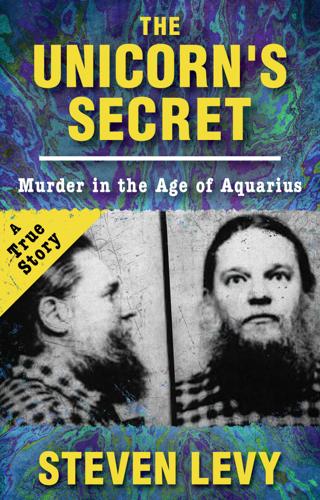
The Unicorn's Secret
by
Steven Levy
Published 6 Oct 2016
On one excursion, a weekend blitz of a college newspaper conference in Washington, Ira documented his participation in the Drummer. He called himself one of the five Marx Brothers, “arriving via train from New York and Philadelphia, armed with chalk, smiles, pot, hash, acid, and the sense that America is quickly dying.” The other brothers were Jerry Rubin, Abbie Hoffman, Realist editor Paul Krassner, and psychedelic artist Marty Carey. Einhorn helped disrupt a Eugene McCarthy press conference. To those at the conference wondering who was this fifth Marx Brother, Ira provided the following explanation: “a unicorn here as a guerrilla.” To Einhorn, theater was the best form of protest.
…
(Rubin’s recollection is otherwise.) Ira once claimed that the SDS called him to task for “turning on all the politicals”; he defended himself by insisting that “we can know a little bit more, when we travel a little bit further.” When celebrity Yippies came to town, Ira acted as unofficial advance man. At Abbie Hoffman’s whistle-stop tour of Philadelphia, Ira hosted a news conference, then introduced him at a lecture hall. A Drummer reporter noted of Ira’s short speech, “Einhorn’s heart may or may not be in the right place, but his prose runs to cliché, and the light in his eye seems to have less to do with the fire next time than with the desire to blaze a path across the Philadelphia firmament.”
…
Grant Schaefer, for instance, who ran the first head shop in Powelton Village, now sells real estate for Century 21. Michael Hoffman is the head of the English department at a California college; Michael Woal also teaches. Of those known as Yippies, Jerry Rubin promotes events at New York’s Limelight nightclub, Abbie Hoffman remains active in politics, and Allen Ginsberg is still Allen Ginsberg. The first poem in his recent collection, White Shroud, contains this stanza: Did the Ecologist chop his girl with an ax in Philadelphia & hide her corpse a year in the trunk? What does that red-haired boy half-naked on the sidewalk with his Frisbee think of that?
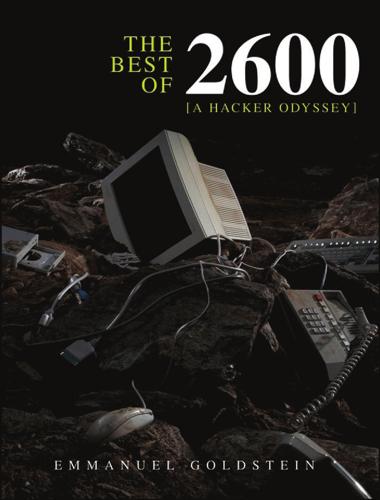
The Best of 2600: A Hacker Odyssey
by
Emmanuel Goldstein
Published 28 Jul 2008
The only crime taking place is copyright infringement. Remember... (Summer, 1989) Why should we remember Abbie Hoffman? What relationship did he have with 2600? Abbie was, of course, the founder of the Yippies, and the founder of YIPL, which turned into TAP. TAP was the first publication to look at technology through hacker eyes. It’s doubtful 2600 would exist in its present form were it not for the inspiration TAP offered. 229 94192c07.qxd 6/3/08 3:31 PM Page 230 230 Chapter 7 But apart from that, Abbie Hoffman was, for all intents and purposes, a hacker of the highest order. No, he didn’t go around breaking into computers, although we know the subject interested him.
…
And even under a disguise, Abbie accomplished a lot under the name of Barry Freed, leading an environmental group called Save the River in Upstate New York. Abbie gained a reputation for outsmarting the FBI. It’s reported that the FBI gathered more information on Abbie Hoffman than on anyone else in their entire history. That’s something to be proud of. Like a computer hacker, Abbie Hoffman was thought of as a pest by some. His presence was inconvenient and he made people uncomfortable because he wasn’t afraid to point out the flaws. On the personal level, Abbie had a sharp mind and a great sense of humor. He had a terrific enthusiasm for life’s little pleasures and his friends compared him to a little kid who loved toys.
…
Our magazine became the talk of the BBS world and, we would later learn, numerous corporate boardrooms and government agencies. It seemed such a simple idea and yet nobody else was doing it. There had been a newsletter before 2600 known as TAP, which had started publishing back in the ’70s with the help of Abbie Hoffman and a bunch of Yippies. It was a fun publication but it came out sporadically and eventually stopped altogether in the early ’80s. What people saw in 2600 was something previously unheard of in this community: consistency. Every month at the same time we released a new issue. And not only was it consistent, but it actually looked somewhat professional, thanks to my recently acquired job as a typesetter for an unsuspecting local newspaper.
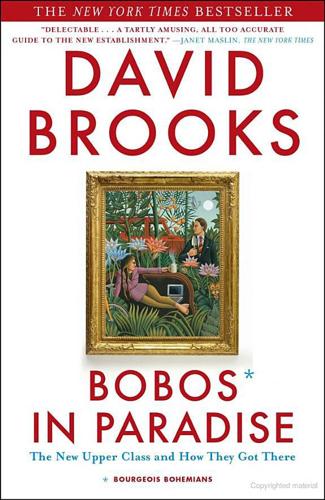
Bobos in Paradise: The New Upper Class and How They Got There
by
David Brooks
Published 1 Jan 2000
The hippie assaults on the bourgeois lifestyle are so well known they don’t really need to be summarized at great length here. But briefly, and leaving aside the civil rights movement and Vietnam and all the complex and substantive political turmoils of that decade, here are a few of the countercultural straws in the wind: In the realm of public theater, Abbie Hoffman threw dollar bills down on the traders of the New York Stock Exchange. The Diggers, a group of San Francisco performance artists, declared “The Death of Money and the Birth of the Free.” In the literary realm, Norman Mailer explored what it meant to be a hipster. In his collection of essays, Advertisements for Myself, Mailer published, glossy-magazine style, a list of what was hip and what was square, and his list corresponds to the traditional split between the bohemian and the bourgeois.
…
Thirty years after Woodstock and all the peace rallies, the people who talk most relentlessly about smashing the status quo and crushing the establishment are management gurus and corporate executives. It’s the big mainstream business leaders that now scream revolution at the top of their lungs, like billionaire Abbie Hoffmans. It’s Burger King that tells America, “Sometimes You Gotta Break the Rules.” It’s Apple Computer that lionizes “The crazy ones. The misfits. The rebels. The troublemakers.” It’s Lucent Technologies that adopted the slogan “Born to be wild.” It’s Nike that uses Beat writer William S. Burroughs and the Beatles song “Revolution” as corporate symbols.
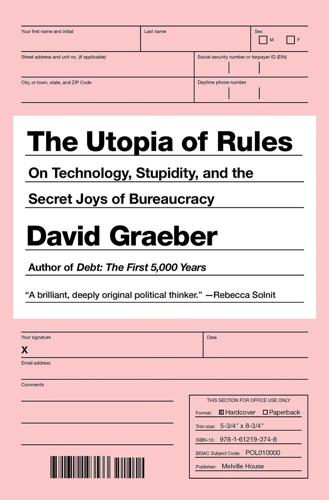
Bureaucracy
by
David Graeber
Published 3 Feb 2015
—Marx and Engels, Manifesto of the Communist Party (1847) “I said that fun was very important, too, that it was a direct rebuttal of the kind of ethics and morals that were being put forth in the country to keep people working in a rat race which didn’t make any sense because in a few years the machines would do all the work anyway, that there was a whole system of values that people were taught to postpone their pleasure, to put all their money in the bank, to buy life insurance, a whole bunch of things that didn’t make any sense to our generation at all.” —Abbie Hoffman, from the trial of the Chicago Seven (1970) Since its inception in the eighteenth century, the system that has come to be known as “industrial capitalism” has fostered an extremely rapid rate of scientific advance and technological innovation—one unparalleled in previous human history. Its advocates have always held this out as the ultimate justification for the exploitation, misery, and destruction of communities the system also produced.
…
A case could be made that even the shift into R&D on information technologies and medicine was not so much a reorientation towards market-driven consumer imperatives, but part of an all-out effort to follow the technological humbling of the Soviet Union with total victory in the global class war: not only the imposition of absolute U.S. military dominance overseas, but the utter rout of social movements back home. The technologies that emerged were in almost every case the kind that proved most conducive to surveillance, work discipline, and social control. Computers have opened up certain spaces of freedom, as we’re constantly reminded, but instead of leading to the workless utopia Abbie Hoffman or Guy Debord imagined, they have been employed in such a way as to produce the opposite effect. Information technology has allowed a financialization of capital that has driven workers ever more desperately into debt, while, at the same time, allowed employers to create new “flexible” work regimes that have destroyed traditional job security and led to a massive increase in overall working hours for almost all segments of the population.
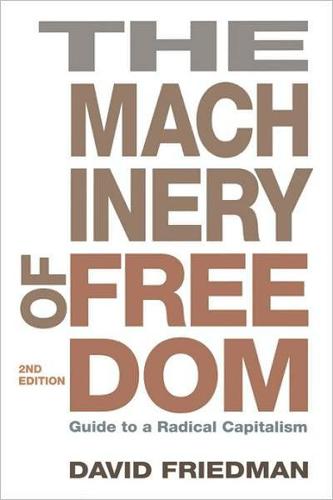
Machinery of Freedom: A Guide to Radical Capitalism
by
David Friedman
Published 2 Jan 1978
("After tax" is after corporate tax; the stockholders still have to pay income or capital gains taxes on those profits before they can spend them, just as the workers must pay income tax on their salaries.) SCARCE MEANS FINITE America: the land of the free. Free means you don't pay, doesn't it? ABBIE HOFFMAN, REVOLUTION FOR THE HELL OF IT Hoffman and others like him argue that the institutions of property, public or private, are obsolete and should be abolished. They claim that an increasingly automated economy can make all goods plentiful, so that property is no longer necessary, and that it now prevents us from producing all we could — that people might starve in a society with unlimited food.
…
If medicine became automated and cheap, profit grubbing capitalists would build free hospitals and make money renting out the interior walls as billboard space. The problem of plenty is not a new one for capitalism. It has dealt with that problem by providing more and better ways to use larger and larger incomes — so successfully that Abbie Hoffman hardly realizes how rich we already are by the standards of previous centuries. Capitalism will continue to deal with the 'problem' of plenty in the same way. It's only fair: capitalism created the problem. POLLUTION The pollution problem exists because certain things, such as the air or the ocean, are not property.
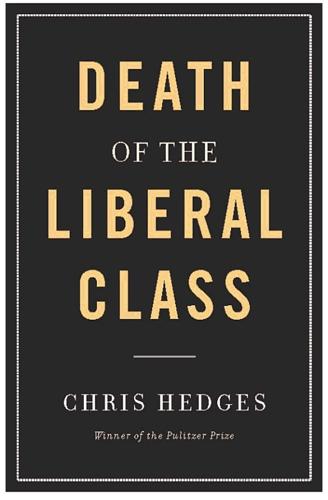
Death of the Liberal Class
by
Chris Hedges
Published 14 May 2010
It, too, offered affirmative, therapeutic remedies to social problems that embraced vague, undefined, and utopian campaigns to remake society. There was no political vision. Herman Hesse’s Siddhartha, with its narrator’s search for enlightenment, became emblematic of the moral hollowness of the New Left. These movements, and the counterculture celebrities that led them, such as the Yippie leader Abbie Hoffman, sought and catered to the stage set for them by the television camera. Protest and court trials became street theater. Dissent became another media spectacle. Antiwar protesters in Berkeley switched from singing “Solidarity Forever’ to “Yellow Submarine.” The civil-rights movement, which was rooted in the moral and religious imperatives of justice and self-sacrifice, what Dwight Macdonald called nonhistorical values, was largely eclipsed by the self-centeredness of the New Left, especially after the assassinations of Malcolm X in 1967 and Martin Luther King Jr. a year later.
…
See Climate change and global warming Globalization and Berrigan and Chomsky and churches and Friedman ideology of and liberal class and poor touted benefits of Gold, Mike Goldman, Emma Goldstone, Richard Gombrich, Ernst Gompers, Samuel Goodman, Amy Goodman, Paul Goodman, Percival Google Gore, Al Grant, Lee Gray, John Greece Green Party Greenhouse gases Greenspan, Alan Greer, Germaine Grinker, Lori Guantánamo Bay Gulf War See also Iraq war Hagee, John Hamas Hamill, Pete Hamilton, Clive Hammett, Dashiell Harding, Warren Hartnett, Vincent Havel, Václav Hayward, Tony Haywood, Bill Health care and Bell “Cadillac” plans and Democratic Party and old communist unions reform bill and unemployment Hedonism and cult of self Hellman, Lillian Henderson, Dean Hennessy, Martha Heritage Foundation Herman, Edward Herzen, Aleksandr Heschel, Abraham Hesse, Herman Hibben, John Grier Hindman, Matthew Hitchens, Christopher Hobbes, Thomas Hoffman, Abbie Hoffman, Stanley Hoh, Matthew Hold, Hamilton Homeland Security, U.S. Department of Homer Hoover, J. Edgar House Un-American Activities Committee (HUAC) Houseman, John Howe, Irving Human Rights Watch Huntington, Samuel Hussein, Saddam, Hypermasculinity Ignatieff, Michael Im Tirtzu Image-based culture India Industrial Workers of the World (IWW) Inflation Intellectuals and Beats Chomsky and Finkelstein on and consumer culture and corporations Howe on Judt on last generation of independent public and left and mass propaganda and multiculturalism and objectivity and popular and political passions and power and practical aims and material advantages and self-imposed exile and Soviet Union and World War I, Internal Revenue Service (IRS) Internet Iran Iraq war and church and Democrats and Friedman and helicopter attack on Iraqi civilians and hypermasculinity and Kerry and liberals and mass propaganda and media and Obama and private contractors theater against and U.N.
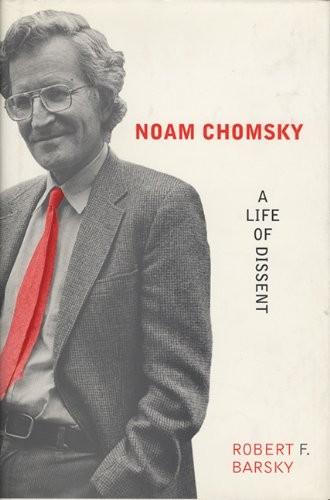
Noam Chomsky: A Life of Dissent
by
Robert F. Barsky
Published 2 Feb 1997
In Germany, colleagues and workers, members and associates of the Frankfurt School (Adorno, Fromm, Horkheimer, Lowenthal, and Marcuse, all of whom had spent time in the United States during or following World War II) were still publishing powerful Marx-inspired works on psychological, sociological, legal, and aesthetic issues. In France, Simone de Beauvoir was claiming for women a more dominant place in society. In the United States, Abbie Hoffman, Malcolm X, and Martin Luther King seemed to offer proof that change within particular disenfranchised sectors of society, and in society as a whole, was not only essential, but also possible (although Malcolm X and King tended more towards liberal reform than radical change). Activists recognized that there were common obstacles.
…
Chomsky therefore involved himself in popular struggles with activist communities, rather than with the endeavors of well-known figureheads of the left. "I knew Marcuse [who was the guru of the New Left and certainly the most politically active of the Frankfurt School members in the United States] and liked him," he writes, "but thought very little of his work. I liked Fromm's attitudes but thought his work was pretty superficial. Abbie Hoffman I knew a bit (I lent him some money, in fact, expecting that he'd probably use it to jump bail, as he did). King was an important figure, thanks primarily to the platforms created for him by SNCC [the Student Nonviolent Coordinating Committee] workers and other activists. Guevara was of no interest to me; this was mindless romanticism, in my view" (31 Mar. 1995).

American Gun: The True Story of the AR-15
by
Cameron McWhirter
and
Zusha Elinson
Published 25 Sep 2023
Ichord, who served in the navy during World War II, also chaired the House Internal Security Committee, then investigating Yippies, Black Panthers, and other leftist organizations who opposed U.S. involvement in Vietnam. He gained national notoriety as a square foil at hearings attended by theatrical self-proclaimed revolutionaries such as Jerry Rubin and Abbie Hoffman. Ichord loathed such protesters who often used toy M16s as props in their protests and public stunts. Abbie Hoffman recounted in Yippie Manifesto (1969) that he came to a committee meeting with a “bandolero of real bullets and carrying a toy M16 rifle on my shoulder. The rifle was a model of the rifles the Viet Cong steal and then use to kill American soldiers in Vietnam.”
…
“We now have a very substantial requirement for the M16s”: Hearings Before the Special Subcommittee on the M-16 Rifle Program of the Committee on Armed Services, House of Representatives, 90th Cong., 1st Sess. (May 15, 16, 31, June 21, July 25, 26, 27, August 8, 9, and 22, 1967), http://hdl.handle.net/2027/uiug.30112109164266, 4470. Democratic representative L. Mendel Rivers: Report on the Activities of the House Committee on Armed Services, 90th Cong., 1st and 2d Sess. (1967–1968), 11214–17. Abbie Hoffman recounted in Yippie Manifesto: See Jerry Rubin, “Yippie Manifesto, Free Pamphlet Series #1” (Vineyard Haven, MA: Evergreen Review, 1969), https://ia902909.us.archive.org/26/items/Rubin-1969-the-yippie-manifesto.pdf/rubin-1969-the-yippie-manifesto.pdf%27.pdf. Ichord was convinced that North Vietnam: See Ichord, Behind Every Bush.
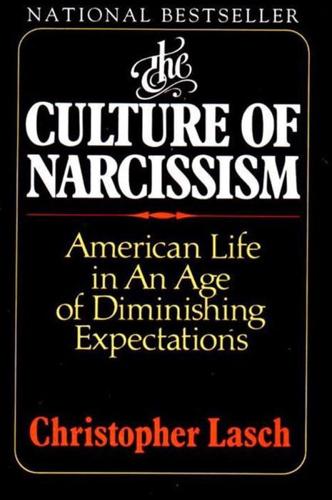
The Culture of Narcissism: American Life in an Age of Diminishing Expectations
by
Christopher Lasch
Published 1 Jan 1978
Rubin sees his "journey into myself as part of the "consciousof the seventies. Yet this "massive self-examina ness movement " - radicals have themselves embraced the therapeutic sensibility. tion Rennie Davis leaves radical politics to follow the teenage guru, sonal or collective. Self-awareness remains mired in liberationist Maharaj Ji. Abbie Hoffman, former leader of the Yippies, de- cides that it is more important to get his own head together than to move multitudes. His onetime associate, Jerry Rubin, having reached the dreaded age of thirty and having found himself face to face with his private fears and anxieties, moves from New York to San Francisco, where he shops voraciously-on an apparently inexhaustible income-in the spiritual supermarkets of the West Coast.
…
One exponent of " guer- after exhorting his followers to live by their wits, quickly explained that to live by your wits is not to imitate the " rilla theater, " . , " militancy. Both whites and blacks embraced radical style in place of radical substance. By 1968 when the new left gathered for its "festival of life" outside the Democratic National Convenuon in Chicago, the , prominence of the Youth International led by Jerry Rubin and Abbie Hoffman made it clear that a theatrical conception of politics had driven more rational conceptions from the field "Yippie is gestalt theater of the streets Rubin has claimed compelling . " " , , people by example to change their awareness. Entering a Congressional hearing room in a Paul Revere costume or wearing judicial robes to a court proceeding is a way of acting out fantasies and ending repressions " .
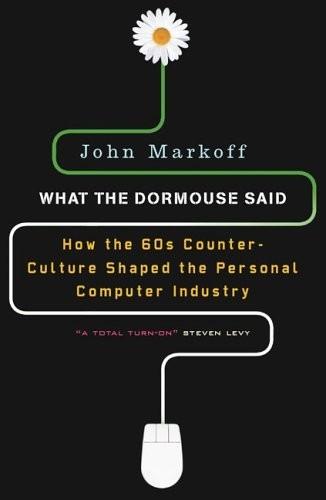
What the Dormouse Said: How the Sixties Counterculture Shaped the Personal Computer Industry
by
John Markoff
Published 1 Jan 2005
But after midnight, when the dispersal of the money was being debated, Moore got angry. This was just like all the bad things that money did everywhere else in the world, he decided. Early on he had gone up to the microphone, removed one of the dollar bills from his pocket, held it up in the air, and burned it. It was a little bit like the Yippies Jerry Rubin and Abbie Hoffman showering dollars onto the floor of the New York Stock Exchange. The point, he argued, was not about money, it was about people. He could see that the money that he so despised was being greeted as a savior and that people were being bought, which was typical. There were big arguments, and it was just the usual downer.
…
“This is cool, there’s something going on here,” he decided. He supported himself as a carpenter while studying electrical engineering, and though he wasn’t an activist, his home became a crash pad for an assortment of sixties political and cultural figures. At different times, Joni Mitchell and Jane Fonda slept over, and once Abbie Hoffman and John Draper crashed at his house on the same night. Draper, whom Dompier had met at the Lawrence Hall of Science in the Berkeley Hills, became a regular guest, taking advantage of an upstairs computer terminal in Dompier’s house to break in to remote mainframe computers. The house rapidly became a center for phone phreaks and hackers.
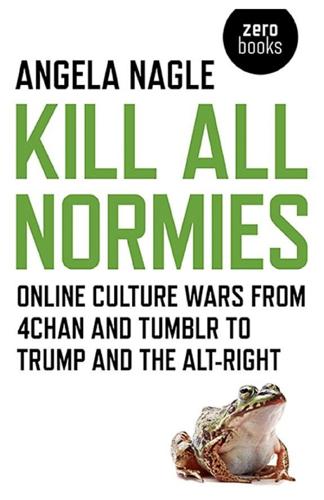
Kill All Normies: Online Culture Wars From 4Chan and Tumblr to Trump and the Alt-Right
by
Angela Nagle
Published 6 Jun 2017
However, trolling is the more high-minded business of what Cochrane calls ‘aggressive rhetoric’, a tradition that goes back to Socrates, Jesus and the trickster god Loki, from Norse mythology. Auernheimer likens himself to Shakespeare’s Puck. Cochrane aspires to Lenny Bruce and Andy Kaufman. They talk of culture jamming, the art of disrupting the status quo to make people think. They talk of Abbie Hoffman. Significantly, the character of Patrick Bateman from the film adaptation of the novel American Psycho by Bret Easton Ellis has been one of the most common film references found on forums like 4chan and later the alt-right, alt-light and anti-feminist forums, along with Fight Club and The Matrix.
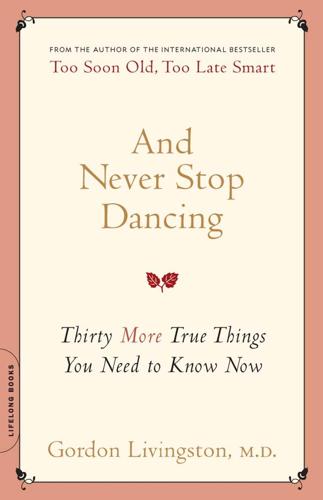
And Never Stop Dancing: Thirty More True Things You Need to Know Now
by
Gordon Livingston
Published 15 Feb 2006
Death, for example, gives to life both its urgency and its essential absurdity. Our fondest ideals, strongest passions, and coveted dreams are all eventually dust. That we can still think them important and laugh at their (and our own) transience is, for me, a mark of courage. Another form of humor I love is turning things upside down. My favorite example is Abbie Hoffman’s quote from the ’60s: “The real question regarding free speech is not whether it is legitimate to yell ‘Fire!’ in a crowded theater, but whether it is permissible to yell ‘Theater!’ at a crowded fire.” One description of humans is “the animals that 45. 0738212494-text.qxd:0738212494-text.qxd 7/10/08 9:34 AM Page 46 And Never Stop Dancing laugh.”
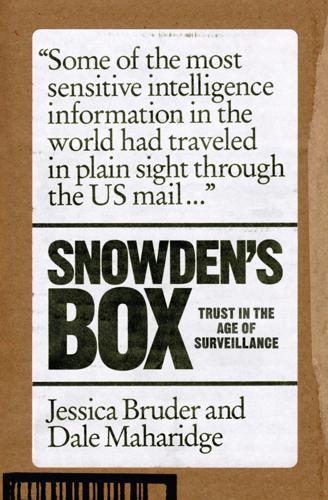
Snowden's Box: Trust in the Age of Surveillance
by
Jessica Bruder
and
Dale Maharidge
Published 29 Mar 2020
Another notorious episode was the assassination of Black Panther leader Fred Hampton, slain by Chicago police officers in a raid coordinated with — and later covered up by — the FBI. A paid Cointelpro mole later confessed to slipping Hampton a sedative before the raid. During the fifteen years of Cointelpro, agents spied on more than one million Americans, including Malcolm X, John Lennon, James Baldwin, Jane Fonda, Yoko Ono, Abbie Hoffman, and Muhammad Ali. Operatives broke into hundreds of homes. They sent unsigned, slanderous letters to activists’ employers, trying to get them fired. They infiltrated grassroots organizations, spreading disinformation to corrode trust between members, causing groups to splinter apart, actively promoting violence that sometimes led to murders.

City Parks
by
Catie Marron
My mother was working for Hubert Humphrey and my father for Eugene McCarthy and I was underfoot in both headquarters, inhaling an historic convention at close range. One day someone threw a stink bomb into the lobby. I can smell it still. The newspapers ran a picture of the cops tossing a demonstrator and his bike into the Lincoln Park Lagoon. Near the Grant Park bandshell, Abbie Hoffman’s comical Youth International Party, the Yippies, nominated a pig for president. Before I knew what was happening, my mother grabbed my ten-year-old hand, harder than on Lakeview, the danger eclipsing any embarrassment. By the time we got the car from the parking lot, Michigan Avenue in front of the Hilton was lined with police, poised to club kids, reporters, anyone who got in the way.
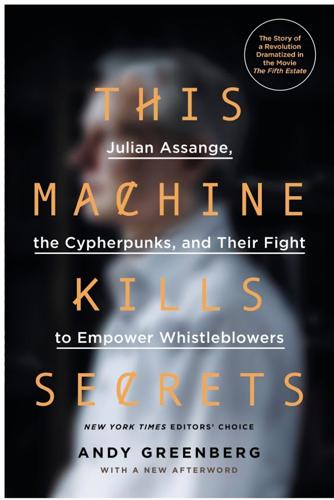
This Machine Kills Secrets: Julian Assange, the Cypherpunks, and Their Fight to Empower Whistleblowers
by
Andy Greenberg
Published 12 Sep 2012
But Zatko’s hobby of breaking the copy protections on video games had evolved into a taste for circumventing security, as it had in the minds of thousands of other kids across the world. They met on bulletin boards and Usenet to exchange tricks—how to crack passwords, make free calls, even get hold of credit card numbers. The teenaged Zatko, who idolized Frank Zappa and as a teenager met another of his heroes, Abbie Hoffman, felt the same distaste for authority as his networked cohorts. Still, he says his explorations remained a matter of innocent curiosity, and he claims he was granted permission by system administrators to access the same networks that had long been his online haunts. “If you asked, it was amazing how often people would say OK and invite you in,” he says.
…
The hacker mantra of free information taken to its logical extreme: They would emerge from the underground and broadcast their digital exploits. Mudge began to court the media, finding curious reporters first in local trade publications and then later in Wired, The Washington Post, and the BBC. They sold T-shirts, attracted groupies, and proudly called themselves “media whores.” Taking cues from Mudge’s hero Abbie Hoffman and consumer protection icon Ralph Nader, the L0pht provocatively placed the onus for security blowups not on evil hacker bogeymen, but on the IBMs, Oracles, Microsofts, and Sun Microsystems of the world, chiding them for not building safer tools for customers. “Companies were saying their products were secure, with no proof at all.
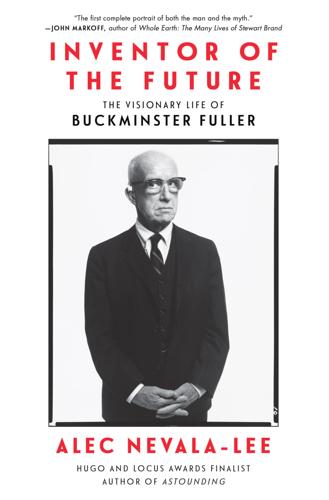
Inventor of the Future: The Visionary Life of Buckminster Fuller
by
Alec Nevala-Lee
Published 1 Aug 2022
This might not have been entirely true—Fuller’s own granddaughter suspected that he was “exaggerating”—but the two men soon reconciled. They saw each other again at a conference for the United States Student Press Association in Washington, DC, which was taken over by what Peter Rabbit, a resident of Drop City, called “an incredible list of freaks,” including the radicals Abbie Hoffman and Jerry Rubin, the cofounders of the Yippies. After a wild weekend of debates over the Vietnam War, Fuller was given the last speaking slot. Peter Rabbit was amazed by his ability to hold the crowd for two hours: “He brought it all together—stood up there, reared back, closed his eyes, touched his body with his hands, and laid it out beautifully.”
…
The highly idealistic youth of college age, convinced that they are demonstrating against war, are in fact the frontline soldiers operating as unwitting shock troops.” These words exposed fissures that had been there all along. Fuller had campaigned for Johnson, worked on shelters for the Marine Corps, and presented his bamboo domes—or “bambassadors”—as a solution to Vietnam. For many of his admirers, this had been easy to overlook, and even Abbie Hoffman had thought little of inviting Fuller to appear with the Yippies. Fuller, for his part, doubted that most activists even wanted to benefit humanity, arguing that they were “agitating simply because they have come to enjoy a sense of power and importance by doing so.” His blind spots were especially glaring when it came to race.
…
Killian Jr., Approaching the Benign Environment, 106–7. “everything with nothing”: Ibid., 108. “gratifying their own personal discontent”: Ibid., 107. “Because almost everyone”: Ibid., 107–8. bamboo domes—or “bambassadors”: Industrial Design, February 1961, 65–68. solution to Vietnam: Keats, You Belong to the Universe, 85. Abbie Hoffman: David Farber, Chicago ’68 (University of Chicago Press, 1988), 47. “agitating simply because”: RBF, “Education for Comprehensivity,” 109–110. “Whites are bleached out”: RBF, “Whites,” in SD, 20656. “swiftly eradicated”: RBF, “Raison d’Etre,” in SD, 14786. “I have never met you before”: George Boesel, interviewed in Gowan, Shared Vision, 167.
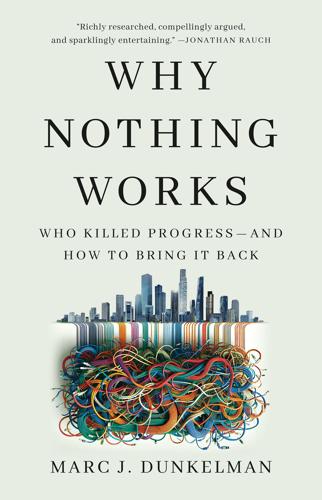
Why Nothing Works: Who Killed Progress--And How to Bring It Back
by
Marc J Dunkelman
Published 17 Feb 2025
Now, if the movement’s prevailing view suggested that, as Gitlin described things, “for every face of authority, there [needed to be] someone to slap it,” conservatives could more easily claim working-class whites away from the Democratic coalition.103 Realizing just how deeply so many Americans resented the radical likes of Abbie Hoffman, Ralph Nader, and Eldridge Cleaver—the silent majority didn’t want every authority figure slapped—the White House purposely baited progressives into taking positions out of step with the president’s mainstream appeal.104 In what was perhaps the most dastardly element of Nixon’s tenure, his own misbehavior only served to steer progressives further into the swerve.
…
He promised at one point to combat the “empty decaying void” of an “establishment center… that commands neither the confidence” of most Americans “or their love.”81 Conservatism’s antipathy for government was narratively resonant with progressivism’s aversion to power.82 Nixon’s promise to fight for America’s “silent majority” against the institutional elite wasn’t so different from cynicism typified by C. Wright Mills, Abbie Hoffman, Eldridge Cleaver, Rachel Carson, and Ralph Nader. Both ends against the middle—both against public power. Today, many may scoff at the notion that progressivism was somehow in sync with Richard Nixon, or vice versa. And, indeed, during this period, progressives remained supportive, in theory, of a whole range of more Hamiltonian proposals embraced by the Democratic mainstream at the time.
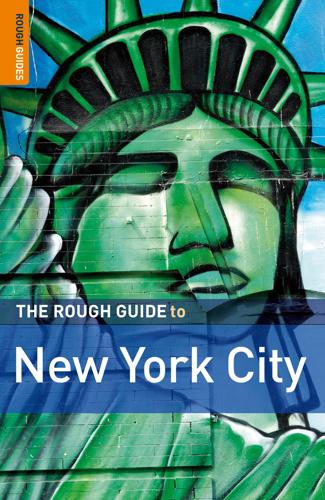
The Rough Guide to New York City
by
Martin Dunford
Published 2 Jan 2009
Another vestige of the East Village’s radical past lies across the Bowery at 9 Bleecker St, where the Yippie Museum and Café (T 212/6775918, W w w w yippiemuseum.org) hosts informal concerts and readings. Although the museum moniker might be slightly misleading at the moment, the place eventually aims to display old Yippie newspapers and protest fliers.The counterculture/antiwar group, led by Abbie Hoffman (who died in 1989), has been based here since 1973, despite being regularly faced with eviction. Cooper Square to Second Avenue Just behind Cooper Square is an area long-inhabited by New York’s Ukrainian community, most evidenced by the beautifully adorned exterior of St George’s Catholic Church on East 7th Street, and the Ukrainian Museum, 222 E 6th St (Wed–Sun 11.30am–5pm; $8, students and seniors $6; 97 THE E AST V I L L AGE | Tompkins Square Park T 212/228-0110, W www.ukrainianmuseum.org), primarily a collection of Ukrainian folk costumes, modern art, and examples of the country’s famous painted eggs, known as pysanky.
…
Tompkins Square Park 98 Fringed by avenues A and B and East 7th and 10th streets, Tompkins Square Park, once part of the estate of President James Monroe, has long been a focus for the Lower East Side/East Village community as well as one of New York’s great centers for political protest. The late Yippie leader Abbie Hoffman lived nearby, and residents like him, along with the many incidents in the square, are what have given the East Village its maverick reputation. The first annual Wigstock, a celebration of high kitsch and cross-dressing, was held here in 1985. In 2003, Wigstock was folded into the first Howl Annual Festival of East Village Arts, a week-long event in August or September named for Allen Ginsberg’s famous poem and founded to channel the neighborhood’s creative spirits.
…
South along MacDougal Street From the southwest corner of the park, follow MacDougal Street south to no. 133, home of the Provincetown Players, who, on the advice of Village resident John Reed (author of Ten Days that Shook the World, a firsthand account of the Russian Revolution), moved here from Massachusetts in 1915 and opened this theater in 1918. Continue to 115 MacDougal, home of the famous Café Wha?, where “soul food for the ear, mind, and, body” was offered in the 1960s. Jimi Hendrix and Bill Cosby began their careers here, and Allen Ginsberg and Abbie Hoffman were regular customers. Continue south until you reach Bleecker Street, with its touristy concentration of boutiques, delis, restaurants, and European-style sidewalk cafés. 106 North of Washington Square THE WE S T V I L L AGE | Washington Square Park and around This is college country, so throngs of students are a permanent part of the scenery in the area.

Survival of the Richest: Escape Fantasies of the Tech Billionaires
by
Douglas Rushkoff
Published 7 Sep 2022
I saw the dangerous allure of this rabbit hole, but figured my friend and I were safe as long as we kept it at arm’s length and remembered this was all metaphor—all a form of collective psychoanalysis or fan fiction using Twitter posts and television news instead of dreams or science fiction novels as the original content. Many of the posts were tongue-in-cheek memes, helping to camouflage the whole project as a form of sociopolitical satire. It felt derivative of the 1960s’ pranksterism of Abbie Hoffman and the Yippies “levitating” the Pentagon. Or the wild speculation of conspiracy satirist Robert Anton Wilson and the Discordians, whose “Operation Mindfuck” was meant to destabilize the consensus narrative around the Cold War and American consumer culture. Like me, the followers of Q saw a certain soullessness among the technocratic neoliberals—and a strong possibility that at least some of the accusations against them were valid.
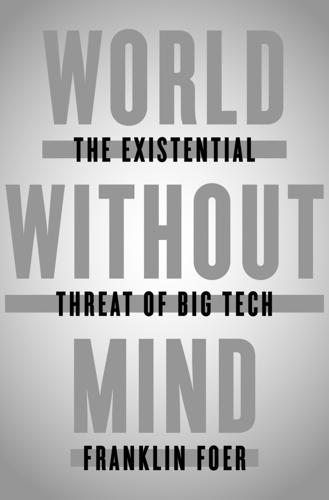
World Without Mind: The Existential Threat of Big Tech
by
Franklin Foer
Published 31 Aug 2017
Alice Waters transferred to the University of California just in time to witness the green shoots of activism there. The school’s Free Speech Movement, with its charismatic leaders and utopian politics, transfixed her. Waters began to host salons, where she cooked for the likes of Huey Newton and Abbie Hoffman. Waters tied her cuisine to the Bay Area zeitgeist. Her ideal was the French food she tasted as an exchange student—food that wasn’t frozen or canned, but intimately connected to the farm, forest, and sea. Through food, it was possible to achieve the holism that Stewart Brand touted, to see our interplanetary connection.
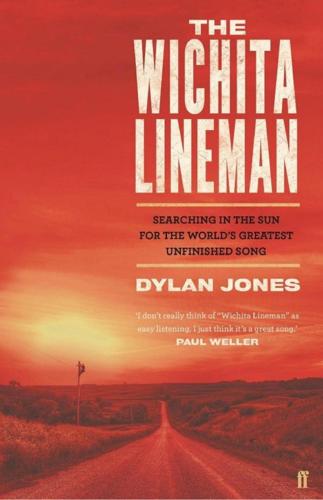
The Wichita Lineman: Searching in the Sun for the World's Greatest Unfinished Song
by
Dylan Jones
Published 29 Jul 2019
At the time, ‘Wichita Lineman’ went largely unnoticed, as it appeared in the midst of a world still grappling with the transitional tropes of the counter-culture. When you had a generation espousing ‘Make Love Not War’, who was going to notice a quirky and overly melodramatic country tune about a telephone repair man? If Sgt. Pepper’s Lonely Hearts Club Band was all about ‘Beethoven coming to the supermarket’ (in the words of the arch Yippie Abbie Hoffman), then Jimmy Webb’s opus was surely just about the prairie coming to the radio. To those who were taking notice, the song may have appeared to be slightly strange, although any idiosyncrasies harboured by ‘Wichita Lineman’ would surely have been obscured by the knowledge that the man singing it on the radio had previously been responsible for two hit records that – on the surface at least – seemed to be archetypes of contemporary country pop: ‘Gentle on My Mind’ and ‘By the Time I Get to Phoenix’ (which had actually been written by Webb himself).

Free as in Freedom
by
Sam Williams
Published 16 Nov 2015
We would never have skipped it for a demonstration." Ultimately, Stallman says, the irrational forces driving the anti-war movement became indistinguishable from the irrational forces driving the rest of youth culture. Instead of worshiping the Beatles, girls in Stallman's age group were suddenly worshiping firebrands like Abbie Hoffman and Jerry Rubin. To a kid already struggling to comprehend his teenage peers, escapist slogans like "make love not war" had a taunting quality. Not only was it a reminder that Stallman, the short-haired outsider who hated rock 'n' roll, detested drugs, and didn't participate in campus demonstrations, wasn't getting it politically; he wasn't "getting it" sexually either.
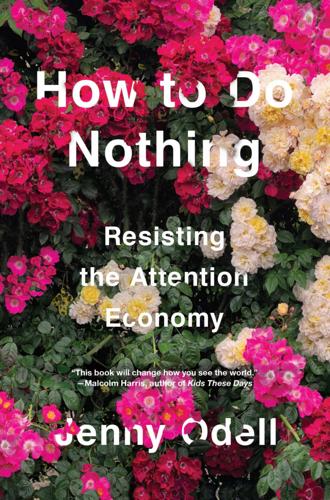
How to Do Nothing
by
Jenny Odell
Published 8 Apr 2019
I’m reminded of my blissful media-less cabin stay in the Sierras when he adds: “For months I didn’t read a newspaper, after years of reading four or five a day.”25 Even at Stephen Diamond’s New Age Farm, a commune that split off from the radical underground Liberation News Service (LNS) in New York with the express purpose of running their own news service, the world of politics began to feel distant from the farm. “[W]e were getting farther and farther away from it, away from the draft resistance news, birth control articles, Abbie Hoffman in Chicago, the poetry of the ‘revolution’”26 At one point Diamond fantasizes about burning down the barn in which they still prepare their LNS mailings: But would that stop it, though? Would that act of the flaming building help reduce those contrasts and tensions (“The ironies that kill”) that were driving me mad: would it put an end to LNS, to that poorly balanced seesaw between starting new, from nothing, and still trying to stay “plugged in,” carrying all the old death karma with us into the hills—and it bringing us down with it.27 The problem, Diamond says, was that they had chosen exit.
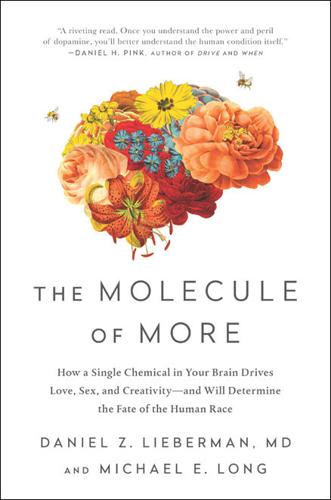
The Molecule of More: How a Single Chemical in Your Brain Drives Love, Sex, and Creativityand Will Det Ermine the Fate of the Human Race
by
Daniel Z. Lieberman
and
Michael E. Long
Published 13 Aug 2018
They found that higher IQ scores at age eight predicted greater risk of developing bipolar disorder by the age of 23. Smarter brains had a greater risk of developing a dopaminergic mental illness compared to ordinary ones. Many famous, creative people have revealed that they live with bipolar disorder. Among them are Francis Ford Coppola, Ray Davies, Patty Duke, Carrie Fisher, Mel Gibson, Ernest Hemingway, Abbie Hoffman, Patrick Kennedy, Ada Lovelace, Marilyn Monroe, Sinéad O’Connor, Lou Reed, Frank Sinatra, Britney Spears, Ted Turner, Jean-Claude Van Damme, Virginia Woolf, and Catherine Zeta-Jones. There are also many noteworthy people from the past who, based on historical documents, are thought to have had bipolar disorder.
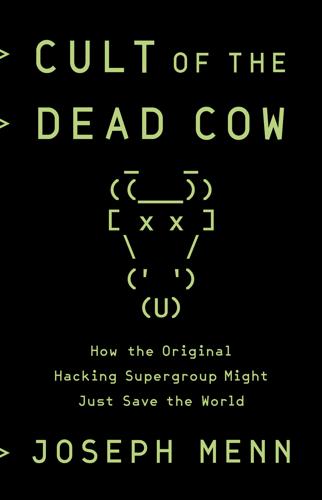
Cult of the Dead Cow: How the Original Hacking Supergroup Might Just Save the World
by
Joseph Menn
Published 3 Jun 2019
The political divide in America at the end of the 1960s was the worst until the 2000s, and that helped push phreaking in a radical direction. The phone companies were very clearly part of the establishment, and AT&T was a monopoly to boot. That made it a perfect target for the antiwar left and anyone who thought stealing from some companies was more ethical than stealing from others. In June 1971, Yippie Abbie Hoffman and early phreaker Al Bell, actually Hoffman acquaintance and former engineering student Alan Fierstein, published the first issue of the Youth International Party Line. The newsletter began by printing secret calling-card codes and went on to publish explicit instructions on how to craft blue boxes and other gizmos for making free calls.
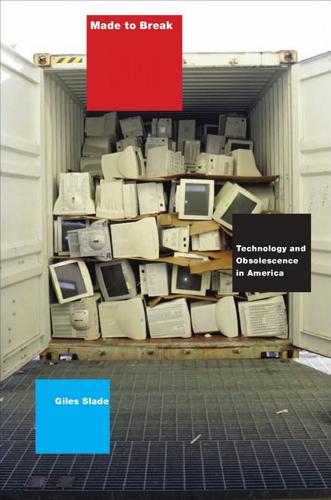
Made to Break: Technology and Obsolescence in America
by
Giles Slade
Published 14 Apr 2006
As the recipient of a prestigious Albert Schweitzer fellowship at New York’s Fordham University, he entered the American mainstream, where he alienated, befriended, or otherwise unsettled an impressive assortment of American cultural leaders, from Woody Allen, John Cage, Joseph Campbell, Buckminster Fuller, Abbie Hoffman, and William Jovanovich to Alan Kay, Stanley Kubrick, Timothy Leary, Victor Papanek, Ezra Pound, Carl Sagan, Tom Wolfe, and Andy Warhol. By mid-century, McLuhan had become a recognized critic of advertising, like Vance Packard before him. McLuhan also had a ready explanation for Packard’s popularity in criticizing the excesses of advertising.
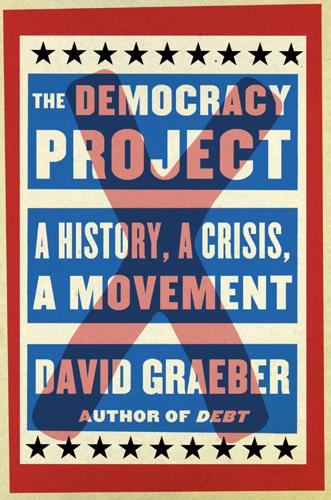
The Democracy Project: A History, a Crisis, a Movement
by
David Graeber
Published 13 Aug 2012
The problem was that since those rules of engagement ensured that thousands of women, children, and old people would end up “collateral damage” in order to minimize deaths and injuries to U.S. soldiers, this meant that in Iraq and Afghanistan intense hatred for the occupying forces would pretty much guarantee that the United States couldn’t obtain its military objectives. And remarkably, the war planners seemed to be aware of this. It didn’t matter. They considered it far more important to prevent effective opposition at home than to actually win the war. It’s as if American forces in Iraq were ultimately defeated by the ghost of Abbie Hoffman. Clearly, an antiwar movement in the 1960s that is still tying the hands of U.S. military planners in 2012 can hardly be considered a failure. But it raises an intriguing question: what happens when the creation of that sense of failure, of the complete ineffectiveness of political action against the system, becomes the chief objective of those in power?

The Age of Stagnation: Why Perpetual Growth Is Unattainable and the Global Economy Is in Peril
by
Satyajit Das
Published 9 Feb 2016
The focus was, in reality, less political than personal, centered on the sexual (assisted by the availability of the contraceptive pill), the spiritual, new styles of dress and appearance. It found its clearest expression in drugs and music, culminating in Woodstock in August 1969. The festival marked an end, not a beginning, as many of its stars would die shortly and the counterculture movement fade away. In August 1967, Abbie Hoffman and Jerry Rubin led a group of fellow Yippies onto the visitors’ balcony of the New York Stock Exchange to denounce greed and the Vietnam War. In a piece of political theater, they threw dollar bills onto the trading floor below. In the 1980s, Rubin re-emerged as a businessman, arguing that the market system was a means of achieving meaningful change in the world, and actor Jane Fonda, who once campaigned for radical causes, starred in bestselling fitness videos.
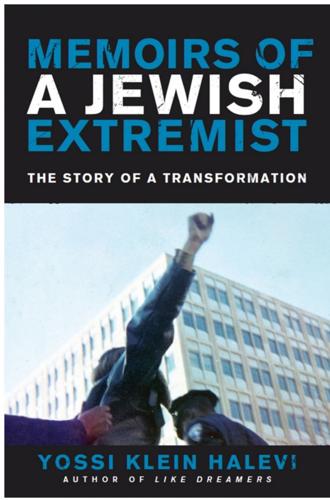
Memoirs of a Jewish Extremist: The Story of a Transformation
by
Yossi Klein Halevi
Published 13 Nov 1995
We looked for Jewish nightmares. We published the paranoid fantasies of a gay Jew imagining a Nazi-style roundup on Christopher Street and a poster by a pair of former Soviet dissident artists of America under Soviet occupation, with Kremlin-style domes and red stars over the Manhattan skyline. When ex-Yippie leader Abbie Hoffman emerged from underground hiding to face a drug charge, we published an interview with him, in which he compared himself to Anne Frank. We didn’t care that he was ludicrous and self-indulgent, only that he was Holocaust-obsessed and fringe. Our few but devoted readers saw us as a community rather than a newspaper.
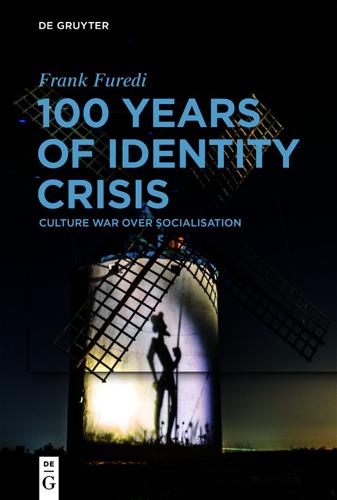
100 Years of Identity Crisis: Culture War Over Socialisation
by
Frank Furedi
Published 6 Sep 2021
Changing yourself or realising yourself, expressing yourself or emancipating yourself became rallying calls for young people drawn towards the self-absorbed spirit of the time. For many, the project of changing yourself served as an end in itself. This was a time when former leaders of the 1960s cultural movement – Jerry Rubin, Abbie Hoffman – declared that it was ‘more important to get your head together than to move the multitudes’.696 The vociferous inward turn by the counter-culture served as the precursor to the politicisation of identity. The politicisation of the emotional needs of the self was one of the most distinct contributions of the 1960s.

Paddle Your Own Canoe: One Man's Fundamentals for Delicious Living
by
Nick Offerman
Published 30 Sep 2013
I realized that we’re being paid nothing or very little for this work, at least in dollars. If we’re not going to do this job as sublimely as possible, then what the hell are we doing? One of my very favorite of Joe’s many bedevilments over the years, and one that can well represent for you his charismatic combination of leadership and monkey business, occurred at the Abbie Hoffman Died for Our Sins Theatre Festival in 1997. Every year in August the Mary-Arrchie Theatre presents this festival to celebrate the anniversary of Woodstock in 1969. This splendid debauch was a nonstop, seventy-two-hour procession of everything from high-quality theater pieces, music, and monologues to absolute absurdism and nonsense.

The new village green: living light, living local, living large
by
Stephen Morris
Published 1 Sep 2007
The NEW VILLAGE GREEN 51 3 THE LIMITS TO GROWTH Periphylla “ The world works a little better any time we manage to make the invisible visible, embed real costs into prices, and impose the consequences of decision-making upon those who make the decisions.” — Donella Meadows 52 W hile the Nearings built a stone house, rock by rock, on the coast of Maine, and while Pete Townsend (of The Who) hit Abbie Hoffman with his guitar when the latter attempted to commandeer the microphone at Woodstock, something very different was happening in the hallowed halls of MIT (The Massachusetts Institute of Technology). Some young people —“turks” by one description,“nerds” by another — were getting very excited by the results they were seeing from computer models comparing known natural resources with consumption rates.
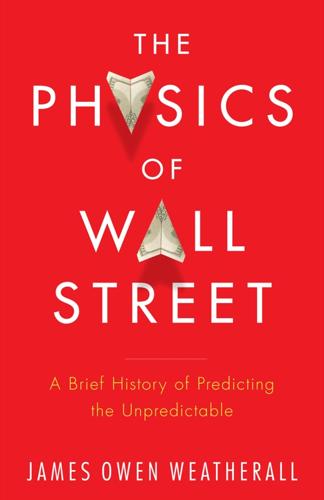
The Physics of Wall Street: A Brief History of Predicting the Unpredictable
by
James Owen Weatherall
Published 2 Jan 2013
From the start, the group was devoted to a revolutionary mindset. Over the years, as they continued to work on roulette, more and more people joined — gamblers, physicists, computer programmers, utopians. The group thought of themselves as Yippies, members of the countercultural movement founded by Abbie Hoffman and others in 1967 and devoted to undermining the status quo through anarchic pranks they called “Groucho Marxism.” For the Eudaemons, the roulette project was a way to beat the Man and take his money — money they planned to use to build a commune on the Washington coast. Thorp and Shannon never had much luck with their roulette adventure, on account of frayed wires and nerves.
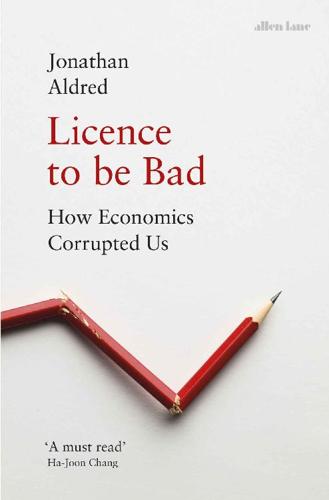
Licence to be Bad
by
Jonathan Aldred
Published 5 Jun 2019
‘Free-riding’ wasn’t just a new label for old behaviour but a new argument that such behaviour was acceptable: an argument mostly based on some economic theory not even invented until the 1930s and still confined to academia as late as the 1960s. As ideas go, free-riding is very new. The emergence in the 1960s of a hippie countercultural mentality of fatalistic powerlessness provided fertile ground for the spread of this new idea. The activist Abbie Hoffman’s Steal This Book, a defining statement of 60s hippiedom, exemplifies the contradictions in free-riding. Rejected by over thirty publishers, it sold over a quarter of a million copies in the first six months after publication, and countless copies were stolen – but without the buyers there would have been very few copies produced for the free-riders to steal.

Whole Earth Discipline: An Ecopragmatist Manifesto
by
Stewart Brand
Published 15 Mar 2009
I saw a version of this narrowness played out after 1966, when I was inspired by a rooftop LSD trip to distribute buttons that read, “Why haven’t we seen a photograph of the whole Earth yet?” Everyone in the New Left opposed Kennedy’s space program, seeing it (correctly) as a cold war episode that they thought (incorrectly) was being carried out to no good purpose by crew-cut military squares. (Only Abbie Hoffman disagreed with his compatriots: “Are you kidding? We’re going to the fucking MOON!”) Environmentalists joined the leftist opposition to the space program: “We have to clean up the Earth before we can leave it.” The exception was Jacques Cousteau, the pioneer of underwater exploration. In a 1976 interview for CoEvolution, he told me that in the 1960s his fellow ocean specialists were scandalized by the expense and irrelevance of the U.S. space program, but he supported it for philosophical reasons that quickly became practical.
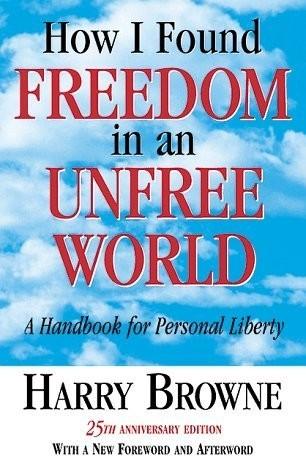
How I Found Freedom in an Unfree World: A Handbook for Personal Liberty
by
Harry Browne
Published 1 Jan 1973
The gifts are always presented with plenty of strings attached; I don't want the strings, and I don't want to depend upon something that may be taken away from me tomorrow. I don't think that most people recognize the strings and the prices, however. And part of the problem may come from thinking that money is the only cost to be considered. For example, Abbie Hoffman's book Steal This Book lists hundreds of ways of getting free goodies from the governmentalong with ways of cheating companies. But in most of the examples cited, you must engage in devious, risky, and involved efforts to get the supposedly "free" benefits. For most people, it would be far less costly to pay the normal market prices of the stolen benefits.
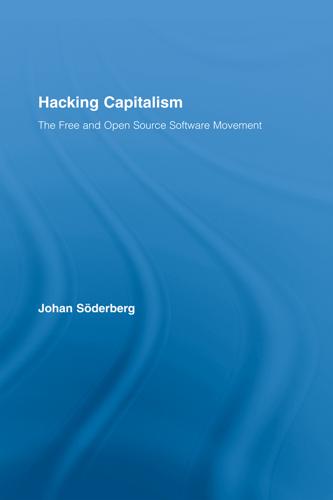
Hacking Capitalism
by
Söderberg, Johan; Söderberg, Johan;
The radicalism of students mixed with the academic cudos of researchers.9 In the following decade, the mixture of hippie lifestyle and technological know-how was adopted by so-called Phone Phreaks, a subculture specialised in tapping phone lines and high-tech petty theft. Political self-awareness within the movement was propagated in the pioneer newsletter, Youth International Party Line. It was edited by Abbie Hoffman who started it in 1971. He saw the liberation of the means of communication as the first step towards a mass revolt. Two years later the newsletter was superseded by the Technological American Party. The new publication jettisoned most of the political ambitions of its predecessor and concentrated on circulating technical know-how.
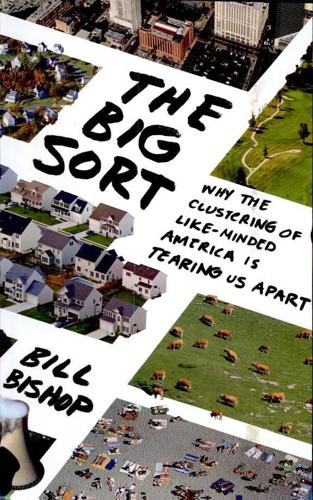
The Big Sort: Why the Clustering of Like-Minded America Is Tearing Us Apart
by
Bill Bishop
and
Robert G. Cushing
Published 6 May 2008
Tricia Nixon married a Republican presidential aide on the White House lawn. In 1970, when Slick was invited to a White House reception for Nixon's fellow Finch College alums, the Secret Service stopped the singer when she tried to bring along her "bodyguard," Yippie founder and Chicago Seven defendant Abbie Hoffman. (The two said they intended to spike the president's iced tea with LSD.) Unless advertisers could learn to distinguish the composer of "White Rabbit" from the president's daughter, O'Toole wrote, marketing research was useless. O'Toole argued that statistics on income, age, and education had lost relevance because there had been a "Revolution of the Individual" in the United States.
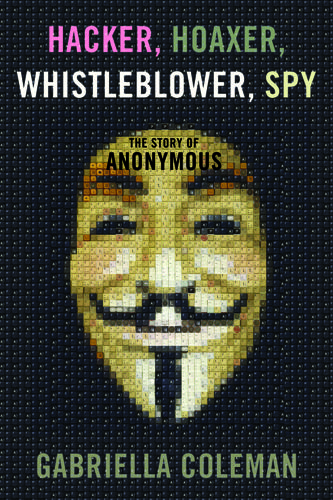
Hacker, Hoaxer, Whistleblower, Spy: The Story of Anonymous
by
Gabriella Coleman
Published 4 Nov 2014
And then, as he explained, a little later, “[President] Bush stole the election, 9/11 happened, and the Patriot Act was passed.” At the age of twenty, he cofounded a radical webzine called Hack this Site—its title riffing on Steal this Book, the 1960s counterculture manual-manifesto written by Abbie Hoffman. (The Yippies published the first hacker/phreak zine, The Youth International Party Line, which advocated ripping off AT&T, aka “Ma Bell,” as a revolutionary act. Its successor publication, Technical Assistance Program (TAP), would shed the overtly leftist political rhetoric.) Hack This Site covered computer security but also delved into radical political trends and events from around the globe, like the movement against the war in Afghanistan and the potential threats to democracy posed by computer-based voting machines.

Smart Cities: Big Data, Civic Hackers, and the Quest for a New Utopia
by
Anthony M. Townsend
Published 29 Sep 2013
He first tried to convene a workshop with the candidates, but was overcome by what he describes as “enthusiastic data syndrome.” Things didn’t click. It was “the classic conversation the geek has with the business user,” Hirshberg says.2 The candidates didn’t get it. Evoking a left-wing hero of the 1960s, Abbie Hoffman, whose unforgettable Steal This Book was a foundational text for the Youth International Party (the “Yippies”), Hirshberg explains how he hacked the election. “I realized, all we need to do this summer is come up with ideas worth stealing. We need the political class to see this as a form of innovation.”
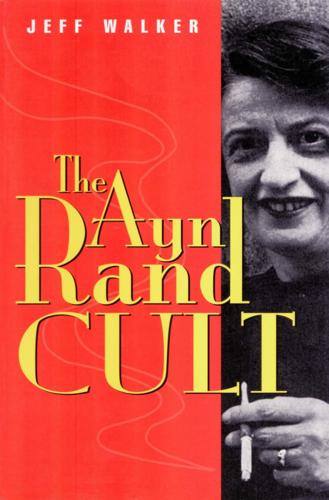
Ayn Rand Cult
by
Jeff Walker
Published 30 Dec 1998
This individualist philosophy had been reconstituted, starting in the 1920s and 1930s, by people like Albert Jay Nock, Rose Wilder Lane, Isabel Paterson, and Ludwig von Mises, then later by Hayek, Rand, and Rothbard. “But they had no public organ. They had no New York Times magazine or New York Review of Books or anything else. And by and large everyone was aware of the left-wing radicalism but not the libertarian-individualist radicalism. . . . We didn’t have any Abbie Hoffmans.” Furthermore, the libertarian individualist radicals tended to be five to ten years younger than the headline-grabbing leftist radicals. First Presidential candidate of the Libertarian Party John Hospers had met Rand in 1960 and would devote pages to her ideas in his ethics text Human Conduct.
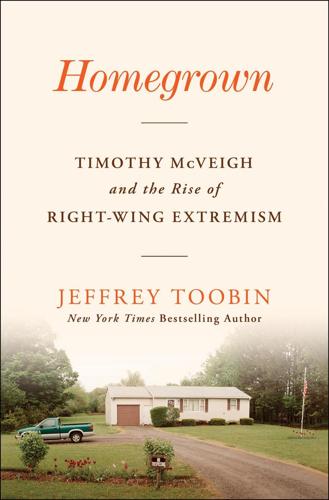
Homegrown: Timothy McVeigh and the Rise of Right-Wing Extremism
by
Jeffrey Toobin
Published 1 May 2023
Jones’s law firm, reflecting the politics of the state, threatened to fire him if he kept the client. Jones refused to drop the young man and was dismissed by the firm. Jones took the protester’s case to federal court, won his client’s freedom with a First Amendment defense, and went off to practice on his own. He represented several more activists, including the notorious 1960s radical Abbie Hoffman, and built a reputation for doggedness and fearlessness. He tried cases all over the state, winning often, and represented a variety of clients—Republican politicians, oil and gas interests, the occasional death row prisoner. By the mid-1990s, Jones was making about a million dollars a year, but he had never garnered the attention that would have come with political success.
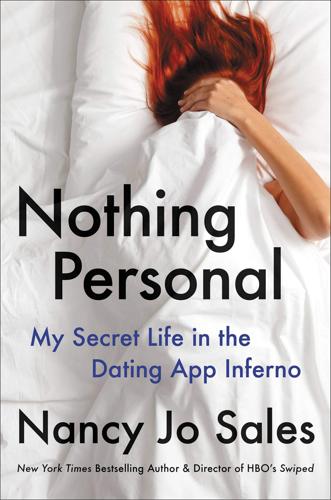
Nothing Personal: My Secret Life in the Dating App Inferno
by
Nancy Jo Sales
Published 17 May 2021
All that creative energy she had, which had never been remotely tapped, was now flowing into the restaurant’s vegetarian lasagna and shrimp tempura and the creamy miso dressing on cornucopia-like salads. After she came on the scene, the place transformed into an unlikely Miami hot spot, attracting some counterculture celebrities such as Abbie Hoffman and Jerry Rubin, whenever they were in town. And then there were our homegrown stars, like the impossibly cool cats of KC and the Sunshine Band and the lionlike Bee Gee brothers, who moved to Miami in the mid-seventies. “Your parents owned that hippie restaurant?” a former editor of Sports Illustrated asked me in the nineties, when I was a newbie reporter at People and working in the Time, Inc., building.
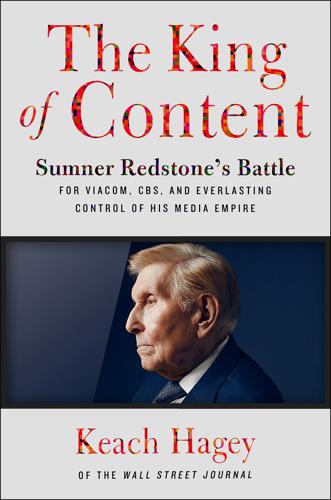
The King of Content: Sumner Redstone's Battle for Viacom, CBS, and Everlasting Control of His Media Empire
by
Keach Hagey
Published 25 Jun 2018
She had been deeply shaken by the shooting of unarmed college students protesting the Vietnam War at Kent State University two years earlier and found Brandeis full of kindred spirits. The small liberal arts college just outside of Boston had developed a reputation as a hotbed of radicalism by the early 1970s, thanks to the activities of both famous alumni, like Angela Davis and Abbie Hoffman, and less famous alumnae, like Susan Saxe and Kathy Power, the Brandeis roommates who spent twenty-three years on the run from the FBI for their role in a September 1970 bank robbery and murder of a police officer tied to an antiwar plot to arm the Black Panthers and overthrow the federal government.
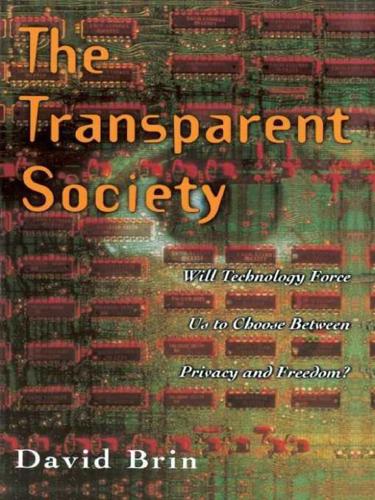
The Transparent Society: Will Technology Force Us to Choose Between Privacy and Freedom?
by
David Brin
Published 1 Jan 1998
As long as we keep raising children who are smarter and better than we are, all these problems weʼre agonizing over will sort themselves out in the long run. Our brainy descendants will have other things to worry about. ACKNOWLEDGMENTS The first duty of a revolutionary is to get away with it. ABBIE HOFFMAN I want to thank those who lent a kind (and critical) eye to early drafts of this book. These good folks include Stefan Jones, John Gilmore, Steve Jackson, Carl Malamud, Roger Clarke, Oliver Morton, John Perry Barlow, Bruce Murray, Bruce Sterling, Chris Peterson, Robin Hanson, Xavier Fan, Martha Minow, Ann Florini, Peter Swire, Michael Foale, Gregory Benford, Joe Miller, Robert Qualkinbush, Gary T.

Consumed: How Markets Corrupt Children, Infantilize Adults, and Swallow Citizens Whole
by
Benjamin R. Barber
Published 1 Jan 2007
You can even fight in a dinosaur sanctuary and throw your opponent onto an annoyed velociraptor” (Charles Herold, “Mayhem With a Beautiful View,” New York Times, January 21, 2006). See also Jonathan Dee, “Joystick Nation: How and why video games conquered music, TV and the movies to become America’s popular pop culture,” New York Times Magazine, December 21, 2003. 61. An Abbie Hoffman yippie title on which, despite the joke, he earned more than a few dollars, and which is still available in a paperback reprint. 62. Guy Debord, The Society of the Spectacle (1967; New York: Zone Books, 1995), p. 146. 63. Kalle Lasn, Culture Jam: The Uncooling of America (New York: Harper Collins [Quill], 1999), p. xi. 64.
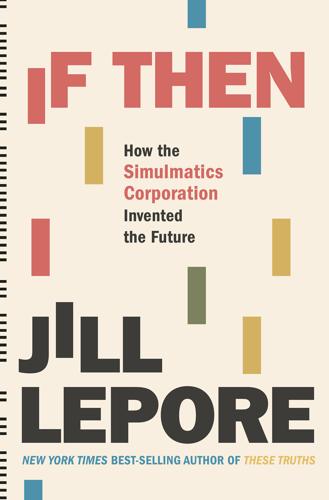
If Then: How Simulmatics Corporation Invented the Future
by
Jill Lepore
Published 14 Sep 2020
David Dellinger had asked twenty-nine-year-old Jerry Rubin to plan a march in Washington. Rubin, who’d dropped out of the University of California, Berkeley, in 1964, had organized the teach-in at Berkeley in May 1965, the meeting at which Eugene Burdick had been too unwell to speak. Rubin had also helped found the Youth International Party, or Yippies, with Abbie Hoffman. He believed in the political power of pranks. Rubin had come up with the idea to lead a march to the Pentagon.92 By midmorning, more than a hundred thousand people had gathered at the Lincoln Memorial. They carried daisies. They carried roses. Organizers had shipped in some two hundred pounds of flowers.93 The rally began at eleven o’clock in the morning.
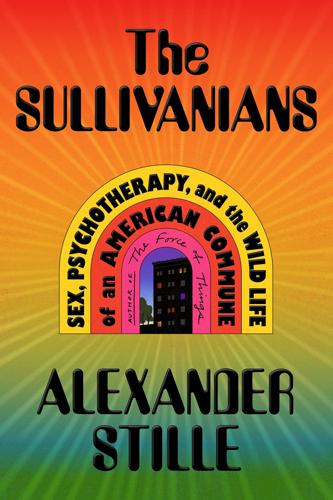
The Sullivanians: Sex, Psychotherapy, and the Wild Life of an American Commune
by
Alexander Stille
Published 19 Jun 2023
Her free-flowing laughter, and the relaxed roundness of the body that went with it, told me she indulged and enjoyed herself. Carol sang in several bands with other Sullivanians. One of them was invited to play at a protest event in Miami at the 1972 Republican National Convention that would renominate President Richard Nixon. Stars of the counterculture Abbie Hoffman and Jerry Rubin—the leaders of the Yippies and defendants in the infamous “Chicago Seven” trial—were there, as was the poet Allen Ginsberg. Carol, though, remembered little of it, as she experienced it in a drunken haze. Her drinking was starting to become a real problem. Sometimes during her sessions with Jane Pearce, when they had run out of things to talk about, they would drink together.
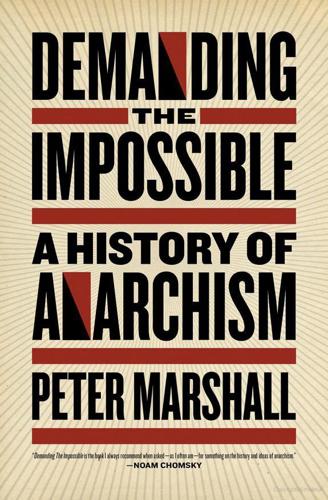
Demanding the Impossible: A History of Anarchism
by
Peter Marshall
Published 2 Jan 1992
A massive non-conformist youth culture developed across the land, especially in California, New York and New England, although its libertarian rhetoric was often a disguise for a self-indulgence which never really threatened the Establishment. It petered out into street-fighting amongst the Yippies inspired by Abbie Hoffman and Jerry Rubin, and the spluttering pyrotechnics of the Weathermen. The seventies and eighties in the United States saw a resurgence of right-libertarianism, with ‘anarcho-capitalists’ like Murray Rothbard drawing inspiration from Spooner and Tucker. The Libertarian Party became in the eighties the third largest party in the country.
…
They rejected the cultural templates of the dominant culture and tried to create their own alternative scene. Partly as a result of their ‘mind-expanding’ drug experiences — as encouraged by Aldous Huxley, Ken Kesey and Timothy Leary — they wanted to change people’s consciousness and cleanse ‘the doors of perception’. But it was also a question of change for change’s sake, or as Yippie leader Abbie Hoffman put it, Revolution for the Hell of It. Like the overtly political New Left movement, the counter-culture was fundamentally anarchist without being conscious of it, especially in its rejection of majority rule and its stress on the moral responsibility of the individual. The military draft became terminally emblematic of the authoritarian State in the United States, for on signing one not only pledged service to a State which was killing mindlessly and pointlessly in Vietnam, but also signed oneself over to the System in all its poisonous finery.

A Generation of Sociopaths: How the Baby Boomers Betrayed America
by
Bruce Cannon Gibney
Published 7 Mar 2017
* Whether the Yippies were serious about any specific goal is unclear, because the movement itself was fundamentally unserious. Nevertheless, the Yippie’s stated platform was anarchy, with Yippie goals captured in their flag, a black field symbolizing anarchy, with a socialist red star, overlaid by a marijuana leaf. The authorities took them at their word. Abbie Hoffman, the Yippies’ leader, was pre-Boomer, but many of the Youth International Party were, obviously, youth—Boomers at the time. * The empirical standard is not absolute proof; it is reasonable evidence for a proposition others may test themselves. Scientists furnish any number of predictions and observations with varying degrees of confidence, but this doesn’t admit that their case is untrue or unproved; it is simple intellectual honesty that most things cannot be known with 100 percent certainty, however close we may get.
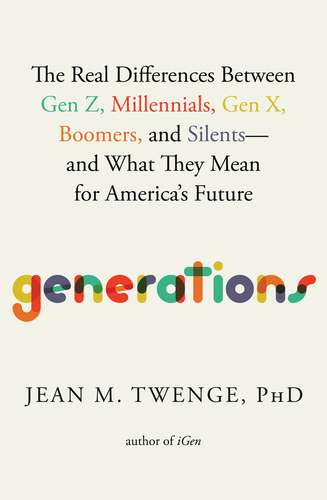
Generations: The Real Differences Between Gen Z, Millennials, Gen X, Boomers, and Silents—and What They Mean for America's Future
by
Jean M. Twenge
Published 25 Apr 2023
The 1964 genesis of the Berkeley Free Speech Movement, where students at the University of California demonstrated for the right to fund-raise on campus on behalf of the civil rights movement, was led by Mario Savio (b. 1942). Other prominent figures of the ’60s counterculture were also Silents, like antiwar activists Abbie Hoffman (b. 1936) and Jerry Rubin (b. 1938), “acid test” promoter Ken Kesey (b. 1935), and feminist Gloria Steinem (b. 1934). Muhammad Ali (b. 1942), who gained fame not just for his boxing but for his opposition to the Vietnam War, was a Silent. The musicians most associated with hippie culture were mostly Silents, like Jimi Hendrix (b. 1942) and Janis Joplin (b. 1943).

The Better Angels of Our Nature: Why Violence Has Declined
by
Steven Pinker
Published 24 Sep 2012
“Do It ’Til You’re Satisfied (Whatever It Is)” was the refrain of a popular song by BT Express. The body was elevated over the mind: Keith Richards boasted, “Rock and roll is music from the neck downwards.” And adolescence was elevated over adulthood: “Don’t trust anyone over thirty,” advised the agitator Abbie Hoffman; “Hope I die before I get old,” sang The Who in “My Generation.” Sanity was denigrated, and psychosis romanticized, in movies such as A Fine Madness, One Flew Over the Cuckoo’s Nest, King of Hearts, and Outrageous. And then of course there were the drugs. Another target of the counterculture was the ideal that individuals should be embedded in webs of dependency that obligate them to other people in stable economies and organizations.
…
Hirohito, emperor of Japan Hironaka, Ann Hirschi, Travis historical myopia history: biases in record “end of,” importance of individual in military, commemorative sites of past as foreign country patterns in as propaganda revisionist spin in study of unchronicled Hitchens, Christopher Hitler, Adolf Hoban, Jack Hobbes, Thomas and anarchy on causes of war and genocide influence of Leviathan on natural state and social contract Hobbesian trap Ho Chi Minh Hoffer, Eric Hoffman, Abbie Hoffman, Stanley Hofstadter, Douglas Hofstede, Geert Holiday, Billie Holmes, Oliver Wendell Holocaust: and evil homosexuals eliminated in and ideology and Nazism survivor stories of see also genocide Holsti, Kalevi Homer, Iliad and Odyssey homicide rates: of aristocrats in Asia in Canada and domestic violence in England in Europe in hate crimes and justice system and kinship male-on-male in New England in nonstate societies as reliable index of violence in southern U.S.
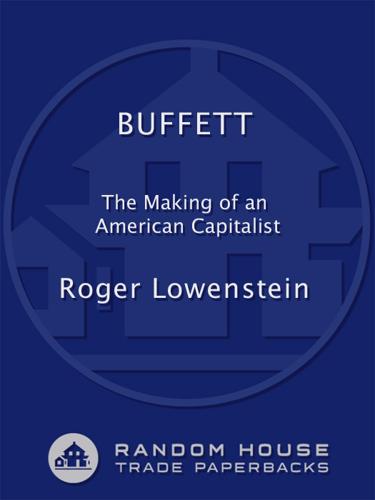
Buffett
by
Roger Lowenstein
Published 24 Jul 2013
It was not only profitable but—for the first time since the twenties—fun. Trading volume was soaring. Consider, when Buffett started out, in the 1950s, volume on the New York Stock Exchange had been two million shares a day; by 1967, it was ten million. The buoyant spirit was mockingly captured by Abbie Hoffman, who visited the exchange that summer and threw dollar bills from the gallery while floor clerks scurried for the loot. On the West Coast, customers at Kleiner Bell stood in front of the ticker tape cheering “Go, go, go.” The Dow roared back to the low 900s. As if on cue, Congress held—what else?
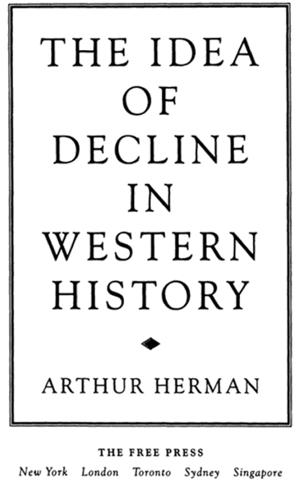
The Idea of Decline in Western History
by
Arthur Herman
Published 8 Jan 1997
They realized, as a biographer and admirer put it, that they were “facing a long and difficult struggle to transform the existing society.” One difficulty was a certain lack of decorum on the part of his putative revolutionary allies. Once, when Marcuse was speaking at the Socialist Scholars Conference in New York on “Radicals and Hippies: Youth Responses to Industrial Society,” Abbie Hoffman, dressed as a cowboy and sporting twin-cap pistols, burst in and marched up to the podium. Lighting up a joint, Hoffman challenged the guru of Eros to stop talking and start smoking.68 Another was Marcuse’s own harsh, uncompromising views on politics—views that might even be termed authoritarian.

New York 2140
by
Kim Stanley Robinson
Published 14 Mar 2017
In 1924, Hubert Fauntleroy Julian, “the Black Eagle,” the first Negro to obtain a pilot’s license, parachuted onto Harlem wearing a devil’s costume and playing the saxophone. Later he flew to Europe and challenged Hermann Goering to an air duel. A pygmy named Ota Benga was exhibited for a month in the primate house of the Bronx Zoo. 1906. Typically American, we had no ideology. —Abbie Hoffman f) Amelia One of Amelia Black’s favorite flyways ran from Montana east over the Missouri River and south toward the Ozarks, then east into Kentucky and through the Delaware Gap and across the pine barrens, briefly out to sea and up to New York. For this entire distance her airship, the Assisted Migration, flew over wildlife habitat and sky ag corridors, and if she kept to a low enough altitude, which she did, there were hardly any signs of people, just a tower here or there, or a cluster of lights on the horizon at night.
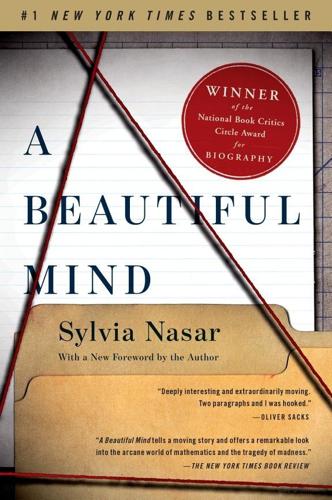
A Beautiful Mind
by
Sylvia Nasar
Published 11 Jun 1998
Princeton was a center of that movement, largely because of the presence of physicists and mathematicians — notably Albert Einstein and John von Neumann — who acted as midwives to the nuclear age.8 One of Nash’s contemporaries in graduate school, John Kemeny — a brilliant young logician, the assistant to Einstein, and later the president of Dartmouth College — was a leader of the World Federalists. However, the one-worlder who fired Nash’s imagination was a loner like himself, the Abbie Hoffman of the one-world movement. In 1948, Garry Davis, a leather-jacketed World War II bomber pilot, Broadway actor, and son of society band leader Meyer Davis, had walked into the American embassy in Paris, turned in his U.S. passport, and renounced his American citizenship.9 He then tried to get the United Nations to declare him “the first citizen of the world.”10 Davis, “sick and tired of war and rumors of war,” wished to start a world government.11 “Every paper headlined the story,” the columnist Art Buchwald recalled in his Paris memoir.12 Albert Einstein, eighteen members of the British Parliament, and a slew of French intellectuals, including Jean-Paul Sartre and Albert Camus, had come out in support of Davis.13 Nash intended to follow in Davis’s footsteps.

The Rise of the Network Society
by
Manuel Castells
Published 31 Aug 1996
For of the last stage of this cultural development, it might well be truly said: “Specialists without spirit, sensualists without heart; this nullity imagines that it has attained a level of civilization never before achieved.”149 1 Berger (1987); Berger and Hsiao (1988). 2 Hamilton and Biggart (1988); Clegg (1990); Biggart (1991); Janelli (1993); Whitley (1993). 3 Granovetter (1985); Clegg (1992); Evans (1995). 4 Biggart (1992: 49). 5 Williamson (1985); Sengenberger and Campbell (1992); Harrison (1994). 6 Piore and Sabel (1984). 7 Harrison (1994). 8 Coriat (1990). 9 Tuomi (1999). 10 Dosi (1988). 11 Piore and Sabel (1984: 17). 12 Hirschhorn (1985); Bettinger (1991); Daniels (1993). 13 Baran (1985); Cohen and Zysman (1987); Coriat (1990: 165). 14 Weiss (1988); Clegg (1990); Sengenberger et al. (1990). 15 Piore and Sabel (1984); Birch (1987); Lorenz (1988). 16 Harrison (1994). 17 Weiss (1988, 1992). 18 Teitz et al. (1981); Schiatarella (1984); Friedman (1988). 19 Gereffi (1993). 20 Coriat (1990); Nonaka (1990); Durlabhji and Marks (1993). 21 Sandkull (1992). 22 McMillan (1984); Cusumano (1985). 23 Wilkinson et al. (1992). 24 Dohse et al. (1985); Aoki (1988); Coriat (1990). 25 Friedman (1988); Weiss (1992). 26 Tetsuro and Steven (1994). 27 Coriat (1994: 182). 28 Aoki (1988: 16). 29 Nonaka (1991); Nonaka and Takeuchi (1994). 30 Sit et al. (1979); Sit and Wong (1988); Castells et al. (1990). 31 Gold (1986). 32 Gereffi (1999). 33 Hsing (1996). 34 Ybarra (1989). 35 Powell (1990). 36 Belussi (1992); Harrison (1994). 37 Leo and Philippe (1989); Biggart (1990b). 38 Imai (1980); Gerlach (1992); Cohen and Borrus (1995b); Ernst (1995). 39 Dunning (1993). 40 Van Tulder and Junne (1988); Ernst and O’Connor (1992); Ernst (1995). 41 Baranano (1994). 42 Mowery (1988). 43 Bennett (1990). 44 Drucker (1988). 45 Business Week (1993a, 1995a). 46 Goodman et al. (1990). 47 Imai (1990a). 48 Benveniste (1994: 74). 49 Vaill (1990). 50 Cusumano (1985). 51 McMillan (1984). 52 Piore and Sabel (1984: 308). 53 Tuomi (1999). 54 This section is based on business reports, both in print and on-line, particularly from Business Week and The Wall Street Journal, as well as on company documents published on their web sites. I do not consider it necessary to provide specific references, except when I cite excerpts from documents. On Cisco Systems I also relied on a research seminar paper by my graduate student Abbie Hoffman (1999). See also Hartman and Sifonis (2000). 55 Cisco Systems (1999: 1–2). 56 McMillan (1984); Cusumano (1985). 57 Dodgson (1989). 58 Harrington (1991); Kotter and Heskett (1992). 59 Hirschhorn (1985); Mowshowitz (1986). 60 Shaiken (1985). 61 Cohendet and Llerena (1989). 62 Boyett and Conn (1991: 23). 63 Shapira (1990); Hsing (1996). 64 Whightman (1987). 65 Fulk and Steinfield (1990); Business Week (1996). 66 Bar and Borrus (1993). 67 Business Week (1998). 68 Ernst (1994b). 69 Touraine (1959). 70 Tuomi (1999). 71 Hamilton (1991). 72 Abolaffia and Biggart (1991). 73 Clegg and Redding (1990). 74 Whitley (1993). 75 Hamilton and Biggart (1988); Biggart (1991); Hamilton (1991); Biggart and Hamilton (1992). 76 Hamilton et al. (1990). 77 Imai and Yonekura (1991); Gerlach (1992); Whitley (1993). 78 Yoshino and Lifson (1986). 79 Abegglen and Stalk (1985). 80 Clark (1979); Koike (1988); Durlabhji and Marks (1993). 81 Kuwahara (1989). 82 Jacoby (1979); Shinotsuka (1994). 83 Chizuko (1987, 1988); Seki (1988). 84 Steers et al. (1989). 85 Biggart (1990a). 86 Yoo and Lee (1987). 87 Kim (1989). 88 Wilkinson (1988). 89 Gelb and Lief Palley (1994). 90 Park (1992). 91 Koo and Kim (1992). 92 Shin and Chin (1989). 93 Amsdem (1989); Evans (1995). 94 Hamilton and Kao (1990). 95 Sit and Wong (1988); Yoshihara (1988). 96 Hamilton (1991); Hsing (1994). 97 Greenhalgh (1988). 98 Wong (1985). 99 Hamilton and Biggart (1988). 100 Hamilton and Biggart (1988). 101 Whitley (1993). 102 Willmott (1972); Baker (1979). 103 Wade (1990); Biggart (1991); Whitley (1993). 104 Beasley (1990); Johnson (1995). 105 Feuerwerker (1984). 106 Amsdem (1979, 1985, 1989, 1992). 107 Norman (1940). 108 Johnson (1982). 109 Hamilton and Biggart (1988: 72). 110 Hamilton (1984, 1985). 111 North (1981). 112 Johnson (1982, 1995). 113 Castells (1992).
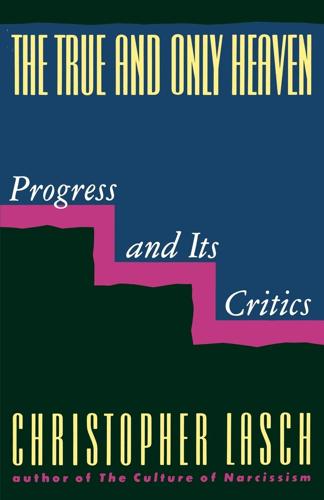
The True and Only Heaven: Progress and Its Critics
by
Christopher Lasch
Published 16 Sep 1991
It soon became clear, however, that the student movement took a different view of the university, one that indiscriminately condemned all institutions and equated "liberation" with anarchic personal freedom. As the new left degenerated into revolutionary histrionics, its spokesmen—clownish media freaks like Jerry Rubin and Abbie Hoffman, seekers of "existential" authenticity like Tom Hayden, connoisseurs of confrontation like Mark Rudd—obviously found it more and more difficult to distinguish between power and authority. My own reading and experience had convinced me that American society suffered from the collapse of legitimate authority and that those who ran our institutions, to the degree to which they had lost public confidence, had to rely on bribery, manipulation, intimidation, and secret -27- surveillance.
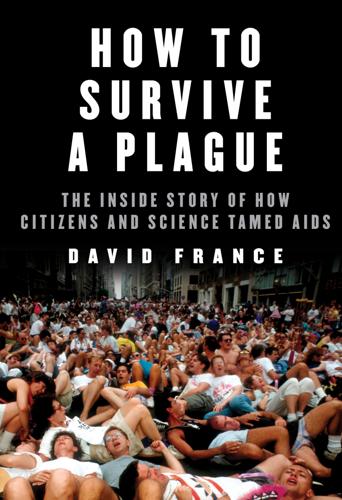
How to Survive a Plague: The Inside Story of How Citizens and Science Tamed AIDS
by
David France
Published 29 Nov 2016
Then they pulled portable marine foghorns from their pockets and pointed them in the air. For Staley this action had deep personal meaning—payback after having endured the homophobia of the trading desk for so many years. He gave the signal. The noise was deafening. At the same time, they pulled big stacks of fake money from their pockets—in homage to Abbie Hoffman, who had protested the Vietnam War inside this building years earlier—and threw them into the air. The slogan printed on the bills bypassed diplomacy: “We die while you make money. Fuck your profiteering.” Once the traders realized what was happening and why, they exploded in outrage. They surged angrily toward the balcony’s staircase.

The Rough Guide to New York City
by
Rough Guides
Published 21 May 2018
At 208 E 13th St historical markers commemorate Emma Goldman, who lived here from 1903 to 1913 while publishing her anarchist paper Mother Earth (she was deported to the Soviet Union in 1919). In the 1950s, the East Village became one of the main New York haunts of the Beat poets such as Kerouac, Burroughs and Ginsberg – the last wrote Kaddish at 170 E 2nd St in 1961, as tribute to his mother, Naomi. The Yippies antiwar group was founded by Abbie Hoffman and Jerry Rubin here in 1967, and was based at 9 Bleecker St until being evicted – finally – in 2014. Andy Warhol debuted the Velvet Underground at the Fillmore East (105 Second Ave at E 6th St), which played host to just about every band you’ve ever heard of between 1968 and 1971, before becoming The Saint (also now defunct), a gay disco famous for its three-day parties (1980–90).

Command and Control: Nuclear Weapons, the Damascus Accident, and the Illusion ofSafety
by
Eric Schlosser
Published 16 Sep 2013
The United States of the 1960s and the 1970s, with its liberalism and countercultural turmoil, was about to become something different. The year 1980, the start of a new decade, was when that change became palpable, in ways both trivial and telling. During the first week of September, the antiwar activist and radical Abbie Hoffman surrendered to federal authorities after more than six years on the run. Before turning himself in, Hoffman sat for a prime-time television interview with Barbara Walters. Another radical leader, Jerry Rubin, had recently chosen a different path. In 1967, Hoffman and Rubin had tossed dollar bills over the balcony at the New York Stock Exchange as a protest against the evils of capitalism.

Palo Alto: A History of California, Capitalism, and the World
by
Malcolm Harris
Published 14 Feb 2023
xix Richard Oakes, a Mohawk SF State student on an OEO grant, was the first to step on the island, where he read the “Alcatraz Proclamation.” Damon B. Akins and William J. Bauer, We Are the Land: A History of Native California (University of California Press, 2021), 281–82. xx The exception to this trend was perhaps the Yippies, the group led by Abbie Hoffman and Jerry Rubin. They worked in a tradition of Jewish humor that wasn’t afraid of alienating the goys. Which it did. A lot. xxi The idea of the revolutionary technician leached into the mainstream in unpredictable ways. Stephanie Rothman’s low-budget soft-core erotica The Student Nurses (1970) depicts a nursing student who falls for a Chicano militant and turns down a hospital job in order to bring medicine to the people.

A People's History of the United States
by
Howard Zinn
Published 2 Jan 1977
In 1984, a group of Vermont citizens (the “Winooski Forty-four”) refused to leave the hallway outside a U.S. Senator’s office, protesting his votes to give arms to the Nicaraguan contras. They were arrested, but at their trial they were treated sympathetically by the judge and acquitted by the jury. At another trial shortly after, a number of people (including activist Abbie Hoffman and Amy Carter, daughter of former President Jimmy Carter) were charged with blocking CIA recruiters at the University of Massachusetts. They called to the witness stand ex-CIA agents who told the jury that the CIA had engaged in illegal and murderous activities all around the world. The jury acquitted them.

Behave: The Biology of Humans at Our Best and Worst
by
Robert M. Sapolsky
Published 1 May 2017
” * These scenarios of members of ethnic, religious, or racial groups eager to publicly punish a shameful in-group member can cut both ways—which behavior constitutes acting shamefully? During the 1969 Chicago Seven trial, presided over by a Jewish judge, Julius Hoffman, the chief provocateur of the defendants, the Jewish Abbie Hoffman (no relation), would insult and taunt the judge by yelling, “You are a shanda fur die goyim [Yiddish for “disgrace in front of the gentiles”]. You would have served Hitler better.” * This plays out currently with the deep resentment of many in the Muslim American community that they are especially obligated to condemn Islamic fundamentalist terrorism and will be under a cloud of suspicion if they do not.
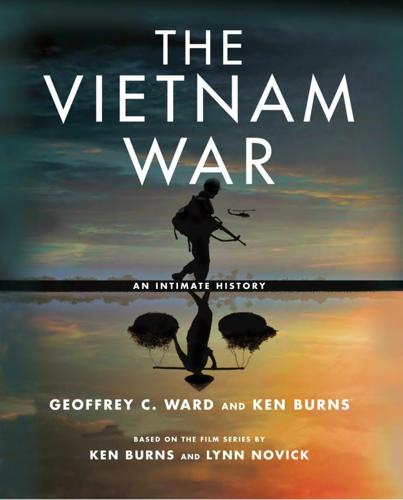
The Vietnam War: An Intimate History
by
Geoffrey C. Ward
and
Ken Burns
Published 4 Sep 2017
The second Moratorium Against the War, November 15, 1969, drew the largest crowd ever seen in Washington up to that time. This time there was trouble on the periphery. Helmeted militants tried to get into the South Vietnamese embassy and, when tear gas drove them back, ran up and down Connecticut Avenue smashing windows. As the speeches ended, Jerry Rubin and Abbie Hoffman began leading several thousand people toward the Justice Department. Jeremy Larner, a speechwriter for Senator McCarthy in 1968, now returned to freelance writing, caught up with Hoffman as they marched. “What do you think of all this, Abbie?” “This is more moral,” he says, surveying the sea of heads and hair, “but Woodstock had more dope.”
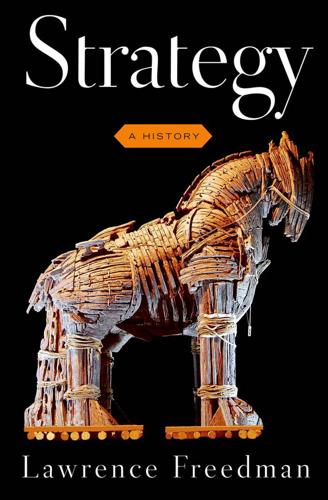
Strategy: A History
by
Lawrence Freedman
Published 31 Oct 2013
It was a political critique which traded “argument for incantation.”43 The theme was picked up by the folk singer Phil Ochs and led to a November 1967 demonstration in New York with three thousand young people running through the streets, proclaiming loudly “I declare the war is over.” Out of this came the idea for the “Yippies” as the political wing of the hippies. The founders of the Yippies were Abbie Hoffman and Jerry Rubin. Both had been involved in radical protests since the start of the decade. Rubin had been involved in the Berkeley free speech movement and had become a fulltime activist, organizing “teach-ins” against the war. He had a reputation as an imaginative tactician but had also moved well to the left.
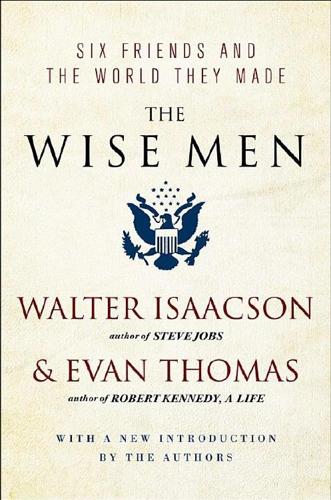
The Wise Men: Six Friends and the World They Made
by
Walter Isaacson
and
Evan Thomas
Published 28 Feb 2012
It is unlikely that he realized it, for he was as ageless as he was duty-bound, but his long service through peace and war had come to an end. CHAPTER 24 Kennan and Harriman LEGACY “Never in such good company” By the spring of 1970, the Establishment and its outposts were under siege. At Harvard, students were shouting “Ho! Ho! Ho Chi Minh! Ho Chi Minh is going to win!” In New Haven, Yippie leader Abbie Hoffman vowed to “burn Yale down.” Old Blues anxiously and not unreasonably wondered whether their alma mater would still be standing for reunions in June. The revolution seeped into the inner sanctum. When it was learned that David Rockefeller, chairman of the Council on Foreign Relations, had offered Bill Bundy the editorship of Foreign Affairs just before the 1970 Harvard-Yale game, many younger members bitterly protested.

Fodor's California 2014
by
Fodor's
Published 5 Nov 2013
The Diggers, a radical group of actors and populist agitators, for example, operated a free shop a few blocks off Haight Street. Everything really was free at the free shop; people brought in things they didn’t need and took things they did. Among the folks who hung out in or near the Haight during the late 1960s were writers Richard Brautigan, Allen Ginsberg, Ken Kesey, and Gary Snyder; anarchist Abbie Hoffman; rock performers Marty Balin, Jerry Garcia, Janis Joplin, and Grace Slick; LSD champion Timothy Leary; and filmmaker Kenneth Anger. If you’re keen to feel something resembling the hippie spirit these days, there’s always Hippie Hill, just inside the Haight Street entrance of Golden Gate Park. Think drum circles, guitar players, and whiffs of pot smoke. | 94117.